:max_bytes(150000):strip_icc():format(webp)/santahatcomputer-5ba0332646e0fb0050e7ae93.jpg)
Easy Guide to Use a Stabilization Tool in Filmora

Easy Guide to Use a Stabilization Tool in Filmora
Does your video shake so much? Shaking movement on your camera is often inevitable, especially if you don’t use a camera stabilizer or a camera with no built-in image stabilization. As a result, it can make your video look distracting and difficult to watch.
But you don’t need to worry. You can use a stabilization tool in Filmora . A stabilization tool is a feature that can help to correct for camera shake and other types of movement. If you are a handheld shooter, you will find this tool extremely helpful.
Part 1: When do you need to stabilize your video?
Now, let’s talk about when you should stabilize your video. If you’re shooting something that is moving, like people or animals, you will definitely want to stabilize your video. This will help ensure that the video is smooth and steady.
Another time you may want to stabilize your video is if you’re shooting in a low-light situation. It will help to ensure that your video is not too shaky.
Finally, if you’re shooting a video that’s going to be displayed on a large screen, you may want to stabilize your video. Stabilizing your video will help ensure the output is crisp and clear.
Part 2: How to stabilize your video with Filmora
Filmora has a stabilization feature that can help to smooth your video and make it look more professional. If you haven’t installed Filmora yet, you can download it for free.
Free Download For Win 7 or later(64-bit)
Free Download For macOS 10.14 or later
So, should you have a wobble movement in your video, follow these steps to make it smoother in no time:
Step1 Launch Filmora 11 and create a new project.
Step2 Import your video to Filmora.

Step3 After you import your video to Filmora, the Stabilization must have been off. So, switch the Stabilization toggle on, then a loading bar will start going up to analyze the clip.
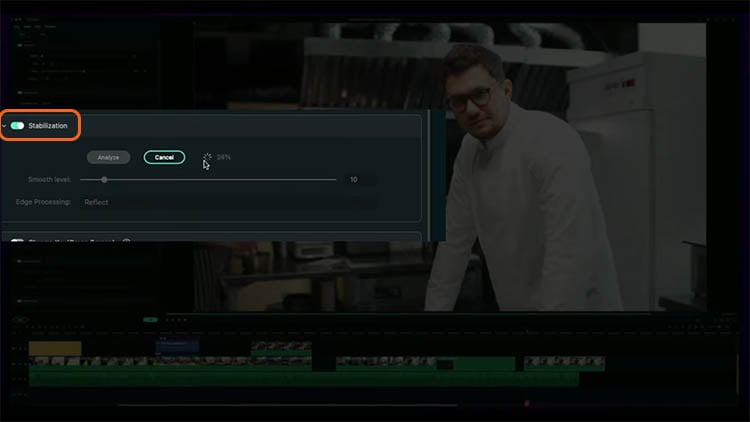
Step4 Once it finishes analyzing, the smooth level will default to 10. See the preview whether you like how it turns out.
Before
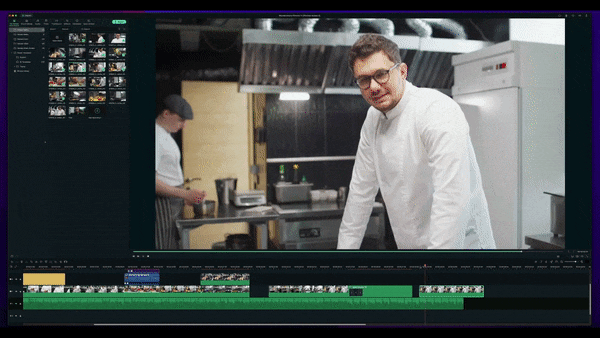
After
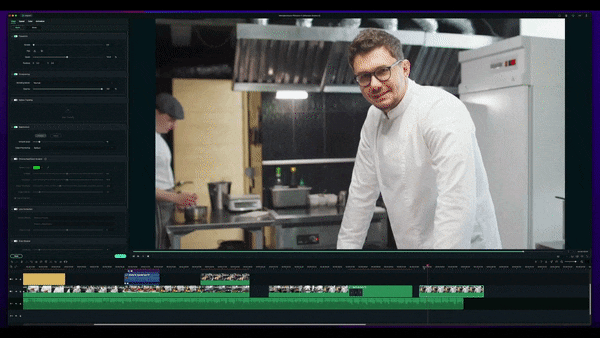
Please note that the center point of your image will always be the most stable. The more shaky a clip is, the more it will crop into that image.
If you are unsatisfied with the default setting, increasing the Smoothness Level will result in more cropping to the image. On the contrary, if you put the Smoothness Level down to zero, you are no longer cropping into the image, but the result won’t be as smooth.
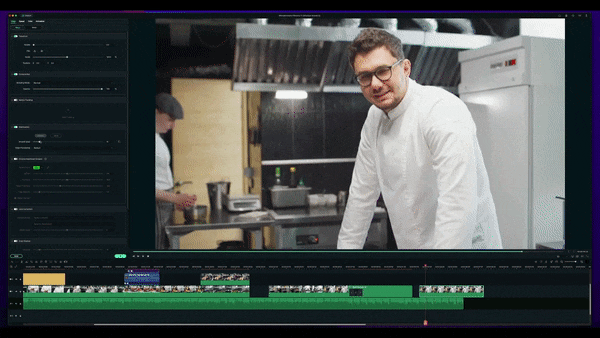
Should the cropping bother you, such as it crops the subject’s hair out of the frame, you can adjust it with Edge Processing.
If you change it to None, you will see the black bars that simulate how it stabilizes the clip. Try to hit play on the preview screen, and then you can see more clearly how the tool keeps the center of the frame to make it stable and less shaky.

As Reflect is the default, the Extend uses artificial intelligence to extend the pixels, as you are often aware in Photoshop.
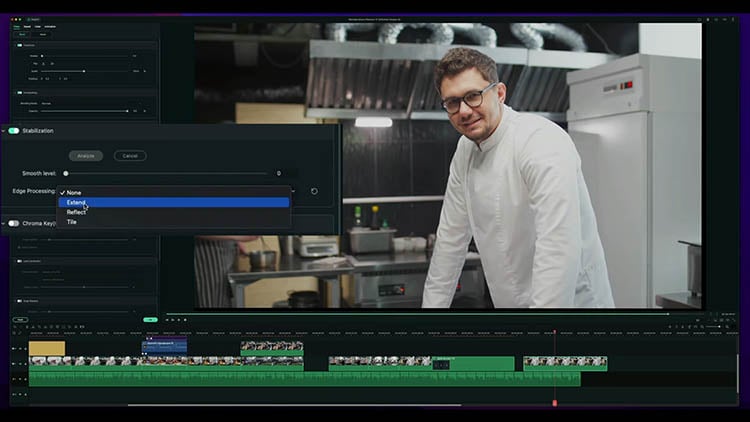
Besides the three, there is also the Tile option. Each of them would give a different result. You can try and use the one that works best for you.
Summary
When you’re shooting a video, you must have wanted it to be as smooth and stable as possible. By stabilizing your video, you can help ensure it’s smooth and easy to watch.
Filmora offers a Stabilization feature that allows you to easily improve your video’s quality. Simply select the video clip you want to stabilize and click the stabilization button. Filmora will do the rest, giving you a smooth and stable video.
Free Download For macOS 10.14 or later
So, should you have a wobble movement in your video, follow these steps to make it smoother in no time:
Step1 Launch Filmora 11 and create a new project.
Step2 Import your video to Filmora.

Step3 After you import your video to Filmora, the Stabilization must have been off. So, switch the Stabilization toggle on, then a loading bar will start going up to analyze the clip.

Step4 Once it finishes analyzing, the smooth level will default to 10. See the preview whether you like how it turns out.
Before

After

Please note that the center point of your image will always be the most stable. The more shaky a clip is, the more it will crop into that image.
If you are unsatisfied with the default setting, increasing the Smoothness Level will result in more cropping to the image. On the contrary, if you put the Smoothness Level down to zero, you are no longer cropping into the image, but the result won’t be as smooth.

Should the cropping bother you, such as it crops the subject’s hair out of the frame, you can adjust it with Edge Processing.
If you change it to None, you will see the black bars that simulate how it stabilizes the clip. Try to hit play on the preview screen, and then you can see more clearly how the tool keeps the center of the frame to make it stable and less shaky.

As Reflect is the default, the Extend uses artificial intelligence to extend the pixels, as you are often aware in Photoshop.

Besides the three, there is also the Tile option. Each of them would give a different result. You can try and use the one that works best for you.
Summary
When you’re shooting a video, you must have wanted it to be as smooth and stable as possible. By stabilizing your video, you can help ensure it’s smooth and easy to watch.
Filmora offers a Stabilization feature that allows you to easily improve your video’s quality. Simply select the video clip you want to stabilize and click the stabilization button. Filmora will do the rest, giving you a smooth and stable video.
Different Ways To Trim Video In Premiere Pro
Create High-Quality Video - Wondershare Filmora
An easy and powerful YouTube video editor
Numerous video and audio effects to choose from
Detailed tutorials provided by the official channel
Trimming your video is one of the most effective ways to get the viewer’s attention. As such, you should always trim the end and beginning of your videos to a length that will not repel viewers. Premiere Pro can help you trim videos, leaving you with tight and compelling content that engages your audience. Developed by Adobe Inc., this timeline-based video editing software application is ideal for those who want to produce the best video. We’ll explain how to trim videos in Premiere Pro.
In this article
01 What Is the Difference Between Cutting and Trimming a Video?
02 How to Trim videos in Premiere Pro in Different Ways
03 Extra Tips About Trimming Videos in Premiere Pro
What Is the Difference Between Cutting and Trimming a Video?
If you are new to video editing, you might find that cutting and trimming video files sound the same to you. At first sight, you’ll see that these two operations are similar because they involve the cutting of videos. Let’s look at the differences between these two operations.
Trimming
Trimming is the process of cutting off a portion of the end or beginning of your video to reduce its length, leaving the desired content only. Trimming is vital when you want to ensure your video starts swiftly and your viewers will not get bored while waiting for something captivating to occur.
The first seconds of a video are what draw viewers’ attention and convince them to continue watching the entire video. When you apply it intelligently, video trimming allows you to remove unnecessary frames from the beginning and end of your video and leave content that your audience will like.
Cutting
Cutting is also a fundamental video editing skill, and it involves removing a portion of a video clip by cutting in two places. You’ll then lift out the middle area and combine the leftover video back together.
This operation is helpful when you want to polish your video and cut off meaningless snippets. What’s more? You can apply cutting if you intend to insert a section of your video clip into another one.
You might want to consider cutting when you want to share your video on social networks and need to cut it into pieces due to the video length limits.
People often confuse trimming with cutting because they are all about deleting sections of the video. However, trimming involves deleting the beginning and end of a video, while cutting refers to cutting a part of a video file from somewhere else. Understanding this crucial difference will allow you to edit your videos like a professional.
How to Trim videos in Premiere Pro in Different Ways
You can trim video Premiere Pro on the timeline or program. Let’s look at these two methods.
Method 1:Trim Clips on Timeline
If you are wondering: What is a timeline? It’s the area Premiere Pro where you arrange your videos and map out the edits you want to apply. You will see all your video clips, transitions, effects, and more laid out in chronological order while you are working on your project. You can Premiere Pro trim video clips on the timeline, and at any point, play your project to check how your edits will look.
Remember that edits on the Premiere Pro timeline don’t alter your source files, and they are previews of how your edits will appear. That means you can untrim a video clip to extend it to its original length without consequence.
To learn how to trim video in Premiere Pro on the timeline, follow the steps below.
- Double click on the video file you want to trim in Premiere Pro.
- Adjust the timings of your edits. Drag the ends of your video clip as if you are resizing a window to shorten or extend by trimming. As your cursor gets closer at the edge of the video clip, you’ll see a red arrow.
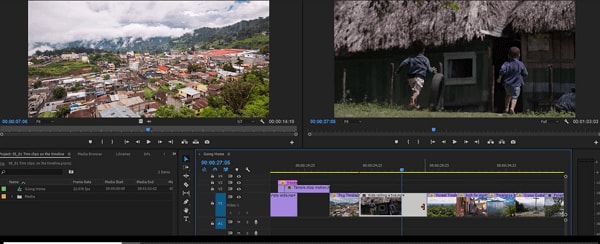
- The Ripple Edit tool lets you trim video clips without leaving a white gap. You can also use it to push adjacent video clips later in the sequence.

- The Rolling Edit tool allows you to adjust the timing of the edit you make between two video clips and extends a clip by the same size you shorten the other.
- Click the padlock icon located on the tracker header to lock the entire track and prevent unwanted changes.
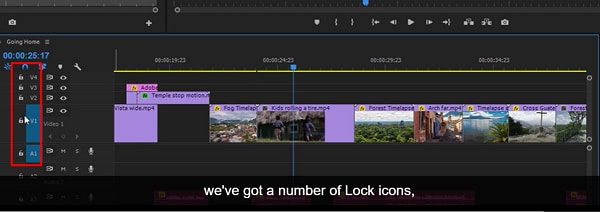
- You can also use the Q and W keys on your keyboard to Premiere Pro trim video. The Q key removes unwanted content at the beginning of the clip, while the W key trims the end of the clip.
- Choose the Selection tool once you’ve finished using the trimming tools.
Method 2:Trim Clips in the Program
You can also trim videos in the Program Monitor. Follow the guide below to learn how to trim a video in Premiere Pro program monitor.
- Double-click the end of your video clip to enter the Trim Mode in the program.
- To trim, drag on the images of your video in the program monitor. You can also use the buttons on the panel.
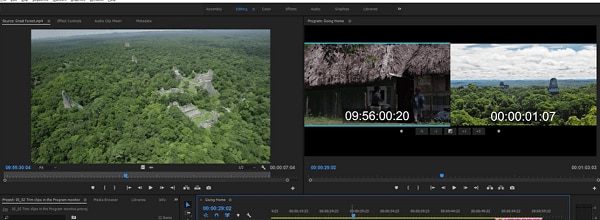
- To exit Trim mode, click an empty section in the Timeline panel.
You can change how trimming works by Command-clicking (macOS) or Control-clicking (Windows) on the images of the video in the program while you are in the Timeline panel or Trim Mode. The yellow cursor means ripple trimming, while the red pointer means regular trimming.
The benefit of trimming videos in the Program Monitor is that the precision adjustment buttons under the footage allow you to trim 1 or 5 frames at a time.
Extra Tips About Trimming Videos in Premiere Pro
We have provided some tips that you should keep in mind when using Adobe Premiere trim video.
How to Trim a Video without Re-Rendering?
When adding a video to Premiere Pro, it will be rendered by this software application to ensure high-quality playback and speed. Rendering takes time afterward, leading to loss of quality; however, it makes sure you have gotten the best video quality as much as possible by removing skipped frames and lag from the video playback.
If you are wondering how to trim videos in Premiere Pro without re-render follow the steps below:
- Import your video to Premiere Pro by launching the application and choosing ‘Import Media to Start’. Browse and select the video you want to trim.
- The video will appear in the media library area at the bottom of the screen.
- Drag and drop the video from the media library to the timeline. You’ll see the complete video clip duration in the timeline.
- You can crop the video by dragging the blue time marker to the duration where you would like to start the video.
- Hold the ‘Ctrl’ key on your keyboard, then drag the starting end of the video clip to the time marker position. You’ll remove unnecessary video content from the beginning of your video.
- You can trim the video from its other end by following the same steps but from the opposite direction. You can only use this method to trim from one of the ends of your video clip.
- Choose the ‘Laser Tool’ located at the side menu of the timeline to trim from the center of the video clip. Now, click on the clip at the position you want to trim, and the application will cut the video from this position.
- Follow steps 2 to 4 to trim from cuts you’ve just made.
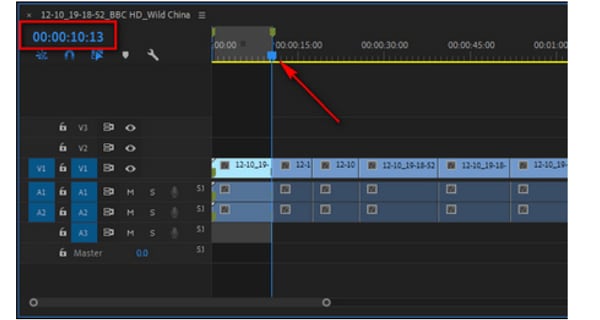
- Go to ‘File’ and choose the ‘Export’ option. Tap ‘Media’ from the list, and you will be directed to the export setting. Here, you can adjust specific settings, such as quality, name, and format. Click ‘Export’ after entering the appropriate information.
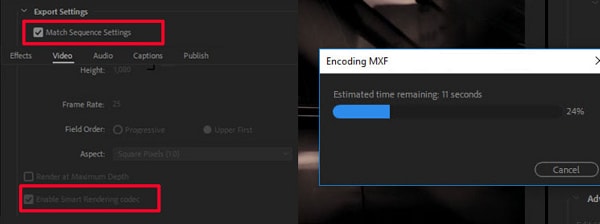
Unlink Audio and Video for Trimming
When you upload a video file to Adobe Premiere Pro and take it into the timeline, the audio tracks and video will be synced and locked. Essentially, this ensures there is no misalignment when the program converts the video to another format. For example, importing it into another video editor can cause a mis-sync between audio and video if the two tracks are not locked or linked.
Video editing professionals avoid this by locking the two tracks together. As such, you might want to unlink or unlock the two before doing anything. To do this, you need to import the video into the application and take it to the timeline with the associated tracks. Then, select the video track alone.
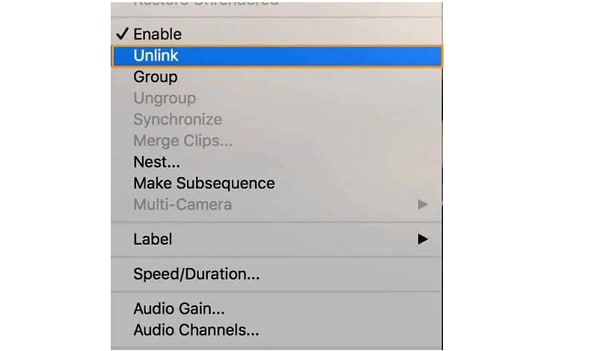
Next, right-click the video track and select the Unlink option. The software will separate the audio from the video track. You can now trim either of these.
How to Trim and Re-Encode Videos without Re-Rendering
Follow the method below to trim video Premiere Pro and encode it without rendering it.
- Launch Premiere Pro and navigate to File, then choose import. Find the video that you want to trim and double click on it.
- Drag and drop the video into the timeline.
- Choose the ‘Ripple Edit Tool’ and then Press ‘Sequence’. Head to ‘Sequence Settings’ and set or modify the codec, bitrate, name, format, and much more.
- Adjust the Ripple so that it defines the end time and start time that you want for your video.
- Now, finalize the trim by choosing ‘File’ and tap ‘Export’. To ‘Export Settings,’ elect ‘Media’.
Conclusion
● Now that you know how to trim videos in Premiere Pro, you can remove unnecessary portions at the beginning or end of your videos. In turn, your videos will attract more viewers.
Trimming your video is one of the most effective ways to get the viewer’s attention. As such, you should always trim the end and beginning of your videos to a length that will not repel viewers. Premiere Pro can help you trim videos, leaving you with tight and compelling content that engages your audience. Developed by Adobe Inc., this timeline-based video editing software application is ideal for those who want to produce the best video. We’ll explain how to trim videos in Premiere Pro.
In this article
01 What Is the Difference Between Cutting and Trimming a Video?
02 How to Trim videos in Premiere Pro in Different Ways
03 Extra Tips About Trimming Videos in Premiere Pro
What Is the Difference Between Cutting and Trimming a Video?
If you are new to video editing, you might find that cutting and trimming video files sound the same to you. At first sight, you’ll see that these two operations are similar because they involve the cutting of videos. Let’s look at the differences between these two operations.
Trimming
Trimming is the process of cutting off a portion of the end or beginning of your video to reduce its length, leaving the desired content only. Trimming is vital when you want to ensure your video starts swiftly and your viewers will not get bored while waiting for something captivating to occur.
The first seconds of a video are what draw viewers’ attention and convince them to continue watching the entire video. When you apply it intelligently, video trimming allows you to remove unnecessary frames from the beginning and end of your video and leave content that your audience will like.
Cutting
Cutting is also a fundamental video editing skill, and it involves removing a portion of a video clip by cutting in two places. You’ll then lift out the middle area and combine the leftover video back together.
This operation is helpful when you want to polish your video and cut off meaningless snippets. What’s more? You can apply cutting if you intend to insert a section of your video clip into another one.
You might want to consider cutting when you want to share your video on social networks and need to cut it into pieces due to the video length limits.
People often confuse trimming with cutting because they are all about deleting sections of the video. However, trimming involves deleting the beginning and end of a video, while cutting refers to cutting a part of a video file from somewhere else. Understanding this crucial difference will allow you to edit your videos like a professional.
How to Trim videos in Premiere Pro in Different Ways
You can trim video Premiere Pro on the timeline or program. Let’s look at these two methods.
Method 1:Trim Clips on Timeline
If you are wondering: What is a timeline? It’s the area Premiere Pro where you arrange your videos and map out the edits you want to apply. You will see all your video clips, transitions, effects, and more laid out in chronological order while you are working on your project. You can Premiere Pro trim video clips on the timeline, and at any point, play your project to check how your edits will look.
Remember that edits on the Premiere Pro timeline don’t alter your source files, and they are previews of how your edits will appear. That means you can untrim a video clip to extend it to its original length without consequence.
To learn how to trim video in Premiere Pro on the timeline, follow the steps below.
- Double click on the video file you want to trim in Premiere Pro.
- Adjust the timings of your edits. Drag the ends of your video clip as if you are resizing a window to shorten or extend by trimming. As your cursor gets closer at the edge of the video clip, you’ll see a red arrow.

- The Ripple Edit tool lets you trim video clips without leaving a white gap. You can also use it to push adjacent video clips later in the sequence.

- The Rolling Edit tool allows you to adjust the timing of the edit you make between two video clips and extends a clip by the same size you shorten the other.
- Click the padlock icon located on the tracker header to lock the entire track and prevent unwanted changes.

- You can also use the Q and W keys on your keyboard to Premiere Pro trim video. The Q key removes unwanted content at the beginning of the clip, while the W key trims the end of the clip.
- Choose the Selection tool once you’ve finished using the trimming tools.
Method 2:Trim Clips in the Program
You can also trim videos in the Program Monitor. Follow the guide below to learn how to trim a video in Premiere Pro program monitor.
- Double-click the end of your video clip to enter the Trim Mode in the program.
- To trim, drag on the images of your video in the program monitor. You can also use the buttons on the panel.

- To exit Trim mode, click an empty section in the Timeline panel.
You can change how trimming works by Command-clicking (macOS) or Control-clicking (Windows) on the images of the video in the program while you are in the Timeline panel or Trim Mode. The yellow cursor means ripple trimming, while the red pointer means regular trimming.
The benefit of trimming videos in the Program Monitor is that the precision adjustment buttons under the footage allow you to trim 1 or 5 frames at a time.
Extra Tips About Trimming Videos in Premiere Pro
We have provided some tips that you should keep in mind when using Adobe Premiere trim video.
How to Trim a Video without Re-Rendering?
When adding a video to Premiere Pro, it will be rendered by this software application to ensure high-quality playback and speed. Rendering takes time afterward, leading to loss of quality; however, it makes sure you have gotten the best video quality as much as possible by removing skipped frames and lag from the video playback.
If you are wondering how to trim videos in Premiere Pro without re-render follow the steps below:
- Import your video to Premiere Pro by launching the application and choosing ‘Import Media to Start’. Browse and select the video you want to trim.
- The video will appear in the media library area at the bottom of the screen.
- Drag and drop the video from the media library to the timeline. You’ll see the complete video clip duration in the timeline.
- You can crop the video by dragging the blue time marker to the duration where you would like to start the video.
- Hold the ‘Ctrl’ key on your keyboard, then drag the starting end of the video clip to the time marker position. You’ll remove unnecessary video content from the beginning of your video.
- You can trim the video from its other end by following the same steps but from the opposite direction. You can only use this method to trim from one of the ends of your video clip.
- Choose the ‘Laser Tool’ located at the side menu of the timeline to trim from the center of the video clip. Now, click on the clip at the position you want to trim, and the application will cut the video from this position.
- Follow steps 2 to 4 to trim from cuts you’ve just made.

- Go to ‘File’ and choose the ‘Export’ option. Tap ‘Media’ from the list, and you will be directed to the export setting. Here, you can adjust specific settings, such as quality, name, and format. Click ‘Export’ after entering the appropriate information.

Unlink Audio and Video for Trimming
When you upload a video file to Adobe Premiere Pro and take it into the timeline, the audio tracks and video will be synced and locked. Essentially, this ensures there is no misalignment when the program converts the video to another format. For example, importing it into another video editor can cause a mis-sync between audio and video if the two tracks are not locked or linked.
Video editing professionals avoid this by locking the two tracks together. As such, you might want to unlink or unlock the two before doing anything. To do this, you need to import the video into the application and take it to the timeline with the associated tracks. Then, select the video track alone.

Next, right-click the video track and select the Unlink option. The software will separate the audio from the video track. You can now trim either of these.
How to Trim and Re-Encode Videos without Re-Rendering
Follow the method below to trim video Premiere Pro and encode it without rendering it.
- Launch Premiere Pro and navigate to File, then choose import. Find the video that you want to trim and double click on it.
- Drag and drop the video into the timeline.
- Choose the ‘Ripple Edit Tool’ and then Press ‘Sequence’. Head to ‘Sequence Settings’ and set or modify the codec, bitrate, name, format, and much more.
- Adjust the Ripple so that it defines the end time and start time that you want for your video.
- Now, finalize the trim by choosing ‘File’ and tap ‘Export’. To ‘Export Settings,’ elect ‘Media’.
Conclusion
● Now that you know how to trim videos in Premiere Pro, you can remove unnecessary portions at the beginning or end of your videos. In turn, your videos will attract more viewers.
Trimming your video is one of the most effective ways to get the viewer’s attention. As such, you should always trim the end and beginning of your videos to a length that will not repel viewers. Premiere Pro can help you trim videos, leaving you with tight and compelling content that engages your audience. Developed by Adobe Inc., this timeline-based video editing software application is ideal for those who want to produce the best video. We’ll explain how to trim videos in Premiere Pro.
In this article
01 What Is the Difference Between Cutting and Trimming a Video?
02 How to Trim videos in Premiere Pro in Different Ways
03 Extra Tips About Trimming Videos in Premiere Pro
What Is the Difference Between Cutting and Trimming a Video?
If you are new to video editing, you might find that cutting and trimming video files sound the same to you. At first sight, you’ll see that these two operations are similar because they involve the cutting of videos. Let’s look at the differences between these two operations.
Trimming
Trimming is the process of cutting off a portion of the end or beginning of your video to reduce its length, leaving the desired content only. Trimming is vital when you want to ensure your video starts swiftly and your viewers will not get bored while waiting for something captivating to occur.
The first seconds of a video are what draw viewers’ attention and convince them to continue watching the entire video. When you apply it intelligently, video trimming allows you to remove unnecessary frames from the beginning and end of your video and leave content that your audience will like.
Cutting
Cutting is also a fundamental video editing skill, and it involves removing a portion of a video clip by cutting in two places. You’ll then lift out the middle area and combine the leftover video back together.
This operation is helpful when you want to polish your video and cut off meaningless snippets. What’s more? You can apply cutting if you intend to insert a section of your video clip into another one.
You might want to consider cutting when you want to share your video on social networks and need to cut it into pieces due to the video length limits.
People often confuse trimming with cutting because they are all about deleting sections of the video. However, trimming involves deleting the beginning and end of a video, while cutting refers to cutting a part of a video file from somewhere else. Understanding this crucial difference will allow you to edit your videos like a professional.
How to Trim videos in Premiere Pro in Different Ways
You can trim video Premiere Pro on the timeline or program. Let’s look at these two methods.
Method 1:Trim Clips on Timeline
If you are wondering: What is a timeline? It’s the area Premiere Pro where you arrange your videos and map out the edits you want to apply. You will see all your video clips, transitions, effects, and more laid out in chronological order while you are working on your project. You can Premiere Pro trim video clips on the timeline, and at any point, play your project to check how your edits will look.
Remember that edits on the Premiere Pro timeline don’t alter your source files, and they are previews of how your edits will appear. That means you can untrim a video clip to extend it to its original length without consequence.
To learn how to trim video in Premiere Pro on the timeline, follow the steps below.
- Double click on the video file you want to trim in Premiere Pro.
- Adjust the timings of your edits. Drag the ends of your video clip as if you are resizing a window to shorten or extend by trimming. As your cursor gets closer at the edge of the video clip, you’ll see a red arrow.

- The Ripple Edit tool lets you trim video clips without leaving a white gap. You can also use it to push adjacent video clips later in the sequence.

- The Rolling Edit tool allows you to adjust the timing of the edit you make between two video clips and extends a clip by the same size you shorten the other.
- Click the padlock icon located on the tracker header to lock the entire track and prevent unwanted changes.

- You can also use the Q and W keys on your keyboard to Premiere Pro trim video. The Q key removes unwanted content at the beginning of the clip, while the W key trims the end of the clip.
- Choose the Selection tool once you’ve finished using the trimming tools.
Method 2:Trim Clips in the Program
You can also trim videos in the Program Monitor. Follow the guide below to learn how to trim a video in Premiere Pro program monitor.
- Double-click the end of your video clip to enter the Trim Mode in the program.
- To trim, drag on the images of your video in the program monitor. You can also use the buttons on the panel.

- To exit Trim mode, click an empty section in the Timeline panel.
You can change how trimming works by Command-clicking (macOS) or Control-clicking (Windows) on the images of the video in the program while you are in the Timeline panel or Trim Mode. The yellow cursor means ripple trimming, while the red pointer means regular trimming.
The benefit of trimming videos in the Program Monitor is that the precision adjustment buttons under the footage allow you to trim 1 or 5 frames at a time.
Extra Tips About Trimming Videos in Premiere Pro
We have provided some tips that you should keep in mind when using Adobe Premiere trim video.
How to Trim a Video without Re-Rendering?
When adding a video to Premiere Pro, it will be rendered by this software application to ensure high-quality playback and speed. Rendering takes time afterward, leading to loss of quality; however, it makes sure you have gotten the best video quality as much as possible by removing skipped frames and lag from the video playback.
If you are wondering how to trim videos in Premiere Pro without re-render follow the steps below:
- Import your video to Premiere Pro by launching the application and choosing ‘Import Media to Start’. Browse and select the video you want to trim.
- The video will appear in the media library area at the bottom of the screen.
- Drag and drop the video from the media library to the timeline. You’ll see the complete video clip duration in the timeline.
- You can crop the video by dragging the blue time marker to the duration where you would like to start the video.
- Hold the ‘Ctrl’ key on your keyboard, then drag the starting end of the video clip to the time marker position. You’ll remove unnecessary video content from the beginning of your video.
- You can trim the video from its other end by following the same steps but from the opposite direction. You can only use this method to trim from one of the ends of your video clip.
- Choose the ‘Laser Tool’ located at the side menu of the timeline to trim from the center of the video clip. Now, click on the clip at the position you want to trim, and the application will cut the video from this position.
- Follow steps 2 to 4 to trim from cuts you’ve just made.

- Go to ‘File’ and choose the ‘Export’ option. Tap ‘Media’ from the list, and you will be directed to the export setting. Here, you can adjust specific settings, such as quality, name, and format. Click ‘Export’ after entering the appropriate information.

Unlink Audio and Video for Trimming
When you upload a video file to Adobe Premiere Pro and take it into the timeline, the audio tracks and video will be synced and locked. Essentially, this ensures there is no misalignment when the program converts the video to another format. For example, importing it into another video editor can cause a mis-sync between audio and video if the two tracks are not locked or linked.
Video editing professionals avoid this by locking the two tracks together. As such, you might want to unlink or unlock the two before doing anything. To do this, you need to import the video into the application and take it to the timeline with the associated tracks. Then, select the video track alone.

Next, right-click the video track and select the Unlink option. The software will separate the audio from the video track. You can now trim either of these.
How to Trim and Re-Encode Videos without Re-Rendering
Follow the method below to trim video Premiere Pro and encode it without rendering it.
- Launch Premiere Pro and navigate to File, then choose import. Find the video that you want to trim and double click on it.
- Drag and drop the video into the timeline.
- Choose the ‘Ripple Edit Tool’ and then Press ‘Sequence’. Head to ‘Sequence Settings’ and set or modify the codec, bitrate, name, format, and much more.
- Adjust the Ripple so that it defines the end time and start time that you want for your video.
- Now, finalize the trim by choosing ‘File’ and tap ‘Export’. To ‘Export Settings,’ elect ‘Media’.
Conclusion
● Now that you know how to trim videos in Premiere Pro, you can remove unnecessary portions at the beginning or end of your videos. In turn, your videos will attract more viewers.
Trimming your video is one of the most effective ways to get the viewer’s attention. As such, you should always trim the end and beginning of your videos to a length that will not repel viewers. Premiere Pro can help you trim videos, leaving you with tight and compelling content that engages your audience. Developed by Adobe Inc., this timeline-based video editing software application is ideal for those who want to produce the best video. We’ll explain how to trim videos in Premiere Pro.
In this article
01 What Is the Difference Between Cutting and Trimming a Video?
02 How to Trim videos in Premiere Pro in Different Ways
03 Extra Tips About Trimming Videos in Premiere Pro
What Is the Difference Between Cutting and Trimming a Video?
If you are new to video editing, you might find that cutting and trimming video files sound the same to you. At first sight, you’ll see that these two operations are similar because they involve the cutting of videos. Let’s look at the differences between these two operations.
Trimming
Trimming is the process of cutting off a portion of the end or beginning of your video to reduce its length, leaving the desired content only. Trimming is vital when you want to ensure your video starts swiftly and your viewers will not get bored while waiting for something captivating to occur.
The first seconds of a video are what draw viewers’ attention and convince them to continue watching the entire video. When you apply it intelligently, video trimming allows you to remove unnecessary frames from the beginning and end of your video and leave content that your audience will like.
Cutting
Cutting is also a fundamental video editing skill, and it involves removing a portion of a video clip by cutting in two places. You’ll then lift out the middle area and combine the leftover video back together.
This operation is helpful when you want to polish your video and cut off meaningless snippets. What’s more? You can apply cutting if you intend to insert a section of your video clip into another one.
You might want to consider cutting when you want to share your video on social networks and need to cut it into pieces due to the video length limits.
People often confuse trimming with cutting because they are all about deleting sections of the video. However, trimming involves deleting the beginning and end of a video, while cutting refers to cutting a part of a video file from somewhere else. Understanding this crucial difference will allow you to edit your videos like a professional.
How to Trim videos in Premiere Pro in Different Ways
You can trim video Premiere Pro on the timeline or program. Let’s look at these two methods.
Method 1:Trim Clips on Timeline
If you are wondering: What is a timeline? It’s the area Premiere Pro where you arrange your videos and map out the edits you want to apply. You will see all your video clips, transitions, effects, and more laid out in chronological order while you are working on your project. You can Premiere Pro trim video clips on the timeline, and at any point, play your project to check how your edits will look.
Remember that edits on the Premiere Pro timeline don’t alter your source files, and they are previews of how your edits will appear. That means you can untrim a video clip to extend it to its original length without consequence.
To learn how to trim video in Premiere Pro on the timeline, follow the steps below.
- Double click on the video file you want to trim in Premiere Pro.
- Adjust the timings of your edits. Drag the ends of your video clip as if you are resizing a window to shorten or extend by trimming. As your cursor gets closer at the edge of the video clip, you’ll see a red arrow.

- The Ripple Edit tool lets you trim video clips without leaving a white gap. You can also use it to push adjacent video clips later in the sequence.

- The Rolling Edit tool allows you to adjust the timing of the edit you make between two video clips and extends a clip by the same size you shorten the other.
- Click the padlock icon located on the tracker header to lock the entire track and prevent unwanted changes.

- You can also use the Q and W keys on your keyboard to Premiere Pro trim video. The Q key removes unwanted content at the beginning of the clip, while the W key trims the end of the clip.
- Choose the Selection tool once you’ve finished using the trimming tools.
Method 2:Trim Clips in the Program
You can also trim videos in the Program Monitor. Follow the guide below to learn how to trim a video in Premiere Pro program monitor.
- Double-click the end of your video clip to enter the Trim Mode in the program.
- To trim, drag on the images of your video in the program monitor. You can also use the buttons on the panel.

- To exit Trim mode, click an empty section in the Timeline panel.
You can change how trimming works by Command-clicking (macOS) or Control-clicking (Windows) on the images of the video in the program while you are in the Timeline panel or Trim Mode. The yellow cursor means ripple trimming, while the red pointer means regular trimming.
The benefit of trimming videos in the Program Monitor is that the precision adjustment buttons under the footage allow you to trim 1 or 5 frames at a time.
Extra Tips About Trimming Videos in Premiere Pro
We have provided some tips that you should keep in mind when using Adobe Premiere trim video.
How to Trim a Video without Re-Rendering?
When adding a video to Premiere Pro, it will be rendered by this software application to ensure high-quality playback and speed. Rendering takes time afterward, leading to loss of quality; however, it makes sure you have gotten the best video quality as much as possible by removing skipped frames and lag from the video playback.
If you are wondering how to trim videos in Premiere Pro without re-render follow the steps below:
- Import your video to Premiere Pro by launching the application and choosing ‘Import Media to Start’. Browse and select the video you want to trim.
- The video will appear in the media library area at the bottom of the screen.
- Drag and drop the video from the media library to the timeline. You’ll see the complete video clip duration in the timeline.
- You can crop the video by dragging the blue time marker to the duration where you would like to start the video.
- Hold the ‘Ctrl’ key on your keyboard, then drag the starting end of the video clip to the time marker position. You’ll remove unnecessary video content from the beginning of your video.
- You can trim the video from its other end by following the same steps but from the opposite direction. You can only use this method to trim from one of the ends of your video clip.
- Choose the ‘Laser Tool’ located at the side menu of the timeline to trim from the center of the video clip. Now, click on the clip at the position you want to trim, and the application will cut the video from this position.
- Follow steps 2 to 4 to trim from cuts you’ve just made.

- Go to ‘File’ and choose the ‘Export’ option. Tap ‘Media’ from the list, and you will be directed to the export setting. Here, you can adjust specific settings, such as quality, name, and format. Click ‘Export’ after entering the appropriate information.

Unlink Audio and Video for Trimming
When you upload a video file to Adobe Premiere Pro and take it into the timeline, the audio tracks and video will be synced and locked. Essentially, this ensures there is no misalignment when the program converts the video to another format. For example, importing it into another video editor can cause a mis-sync between audio and video if the two tracks are not locked or linked.
Video editing professionals avoid this by locking the two tracks together. As such, you might want to unlink or unlock the two before doing anything. To do this, you need to import the video into the application and take it to the timeline with the associated tracks. Then, select the video track alone.

Next, right-click the video track and select the Unlink option. The software will separate the audio from the video track. You can now trim either of these.
How to Trim and Re-Encode Videos without Re-Rendering
Follow the method below to trim video Premiere Pro and encode it without rendering it.
- Launch Premiere Pro and navigate to File, then choose import. Find the video that you want to trim and double click on it.
- Drag and drop the video into the timeline.
- Choose the ‘Ripple Edit Tool’ and then Press ‘Sequence’. Head to ‘Sequence Settings’ and set or modify the codec, bitrate, name, format, and much more.
- Adjust the Ripple so that it defines the end time and start time that you want for your video.
- Now, finalize the trim by choosing ‘File’ and tap ‘Export’. To ‘Export Settings,’ elect ‘Media’.
Conclusion
● Now that you know how to trim videos in Premiere Pro, you can remove unnecessary portions at the beginning or end of your videos. In turn, your videos will attract more viewers.
How to Add Text Behind Objects in Video
Adding text behind objects in your videos can be a great way to start your videos. For example, you can do so to create an attractive intro or startup a video. So, if you hope to make a video like a pro, let’s learn how to add text behind objects in your videos by Filmora.

Part 1. What Are The Benefits of Adding Text Behind Objects in Videos?
Your videos must maintain quality to create content worthy of a huge audience. You may have a YouTube channel or be starting down the road. Then you must give this a try because
Give a cool look
Adding text behind an object in a video looks cool! Now, your object could be a silhouette of a person or a huge skyscraper. You can add a text tile behind the object, creating the illusion. Due to this, the text will be flying in real-time.
Show creativity
Blasting your channel with innovative and creative content is the key to building a big audience. But, of course, you can always opt for many ways to create a video showing your creativity. One of those ways is to add text behind your object.
You can create an attractive intro by adding text behind objects that captivate the viewer. It ensures that your subscribers stay tuned to your channel and your content.
Build up a solid audience
Every day can be a real struggle if you are a daily content creator on YouTube. The audience demands good content. But your daily videos can get boring if you do not use new methods to edit your videos.
You can add text behind videos to spice up your intros and hook your daily audience even more. That will show the audience that you are genuinely putting in the effort.
Part 2. What Will You Need To Add Text Behind Videos?
Now there are a few things that you will need to add text behind videos. First, take a look at the basic priorities to perform this feature.
1. A Static Object Video
Adding text behind an object can be tricky if the object isn’t static. For example, the effect will be ruined if an object moves around a lot in a video.
Our goal is to create a smooth text behind the video effect. And this can only be achieved if the target object remains static in the video and does not move about its position.
2. A Video Editing Software - Wondershare Filmora
Once you select a video source, you aim to add it to a video editor. For this purpose, Wondershare Filmora would be your best choice. Wondershare Filmora allows you to create innovative and attractive videos.
Free Download For Win 7 or later(64-bit)
Free Download For macOS 10.14 or later
It has a very engaging system UI, allowing even beginner users to get their hands on it instantly. You will learn how to add text behind your videos with a few simple steps.
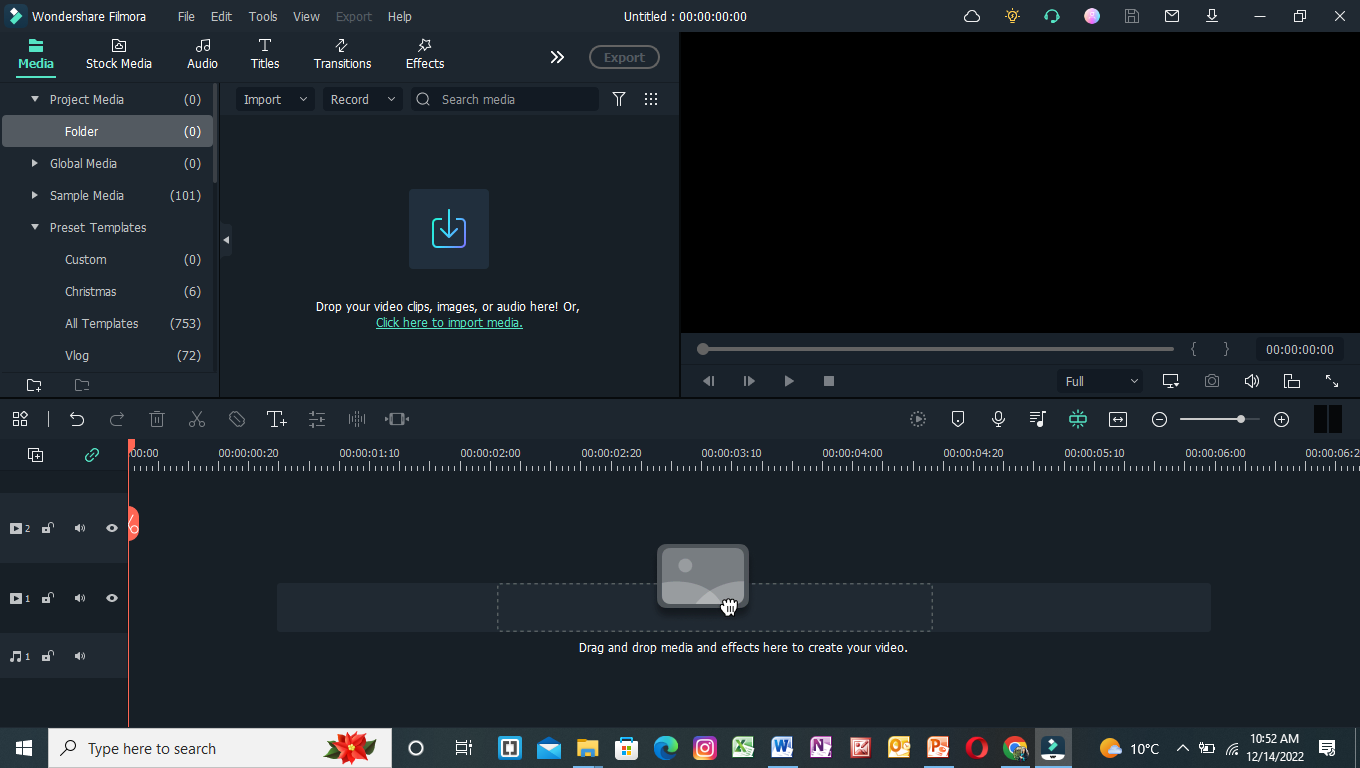
Now that you know the requirements for the video, let’s move on to the step-by-step guide to add text to your video.
Part 3. Step-by-Step Guide To Add Text Behind Videos
We look at two examples of how to add text behind videos in Wondershare Filmora.
- A static video with an object that can be easily masked out.
- A video with high contrast and a clean background.
Add Text behind a Static Video
First, we will go with adding text behind a static object. For this, scroll more to get the step-by-step process.
Step1 Download Wondershare Filmora
If you are a beginner just starting in the video editing business, Wondershare Filmora is the best choice. Follow the steps below to download the free version of Wondershare Filmora:
- First, download the Wondershare Filmora on your PC or Mac.
- Open the setup and install the Wondershare Filmora.
After downloading the Wondershare Filmora software, let’s edit the video. Scroll below to learn how to start the editing process!
Step2 Add the Video to the Timeline
We will first look at the static video example. For this, follow the below instructions:
- You have to start by importing your video in the import library.
- From the import library, you can click on the video and drag it down below to the timeline.
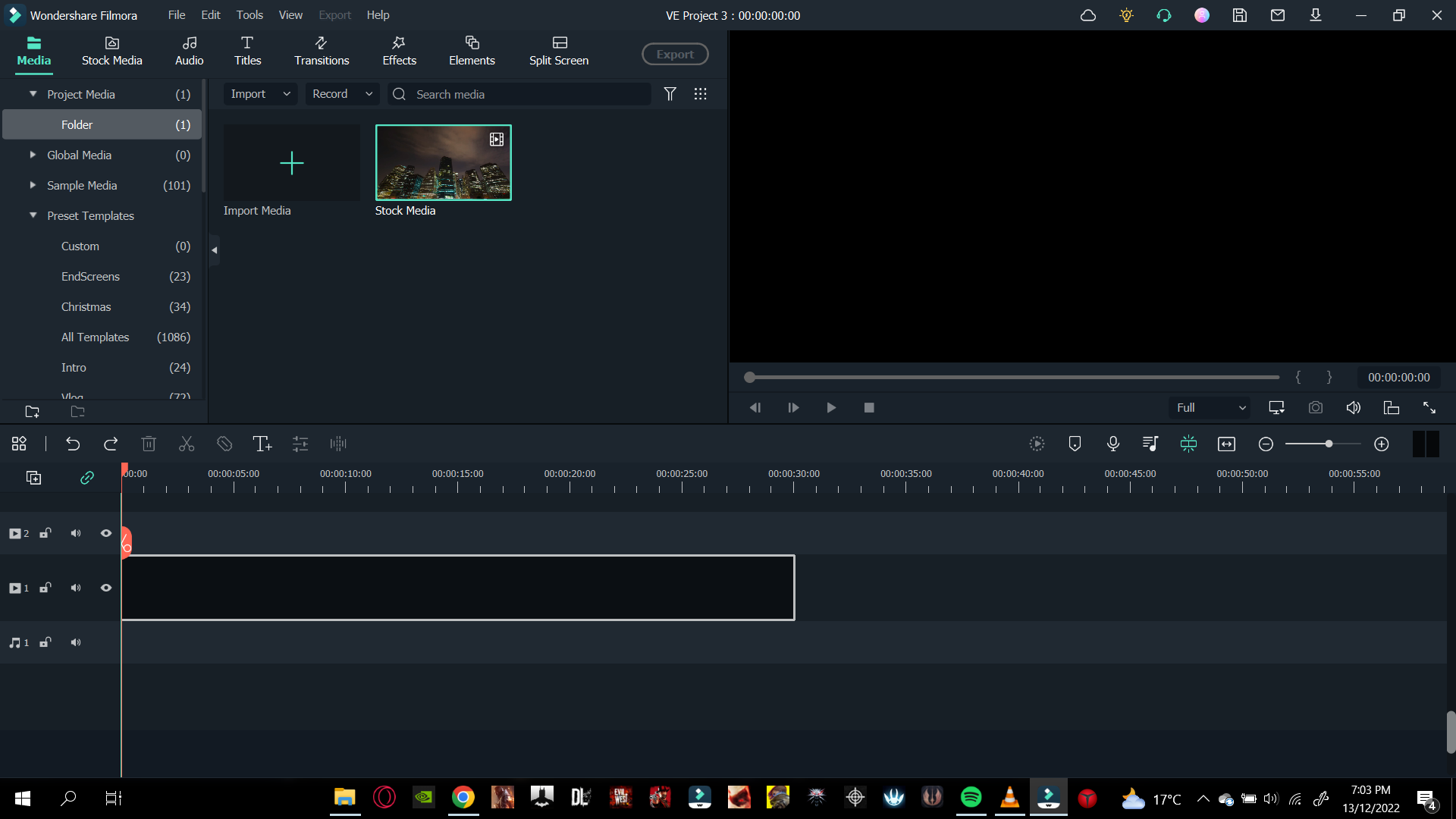
![]()
Note: Adding video to the timelines will allow you to create a workspace to edit your video.
Now let’s move on to how we will add the text tile to our video.
Step3 Add the Text Tile
It is time to add the text tile you will animate behind the object. To do that, follow the steps mentioned as such.:
- Go to the Titles icon on the bar above the import library.
- A drop-down option will be available on the left side.
- Scroll down to the Plain text.
- Here, you can see many text tiles to add to your video.
- You can choose anyone you like.
- The most commonly used tile is the Basic 6.
- When you add the text tile to the timeline, you must ensure that the text is of equal length to the video.
- To do that, drag the right corner of the text tile and drag it to the right to match the length of the video.
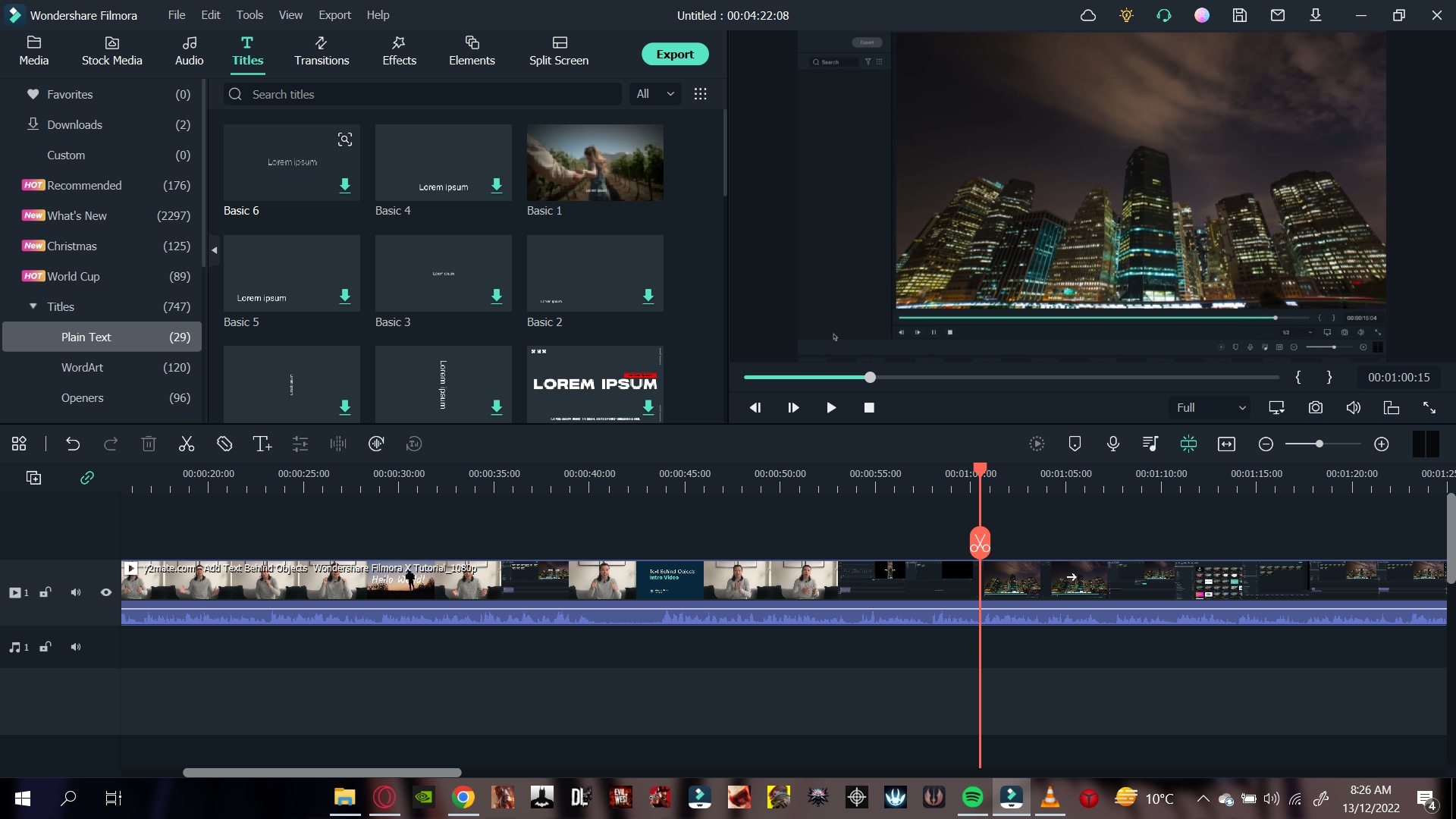
Step4 Edit the Text Tile
After you have added the text tile you desire, you need to type in the text. For this article, we will keep it simple. We will be typing a simple statement such as “Hello, World.“
- Double-click the Text tile to open the settings menu.
- After the settings menu is opened, type in the text box on the import window.
You will notice changes on the main window that your text has changed.
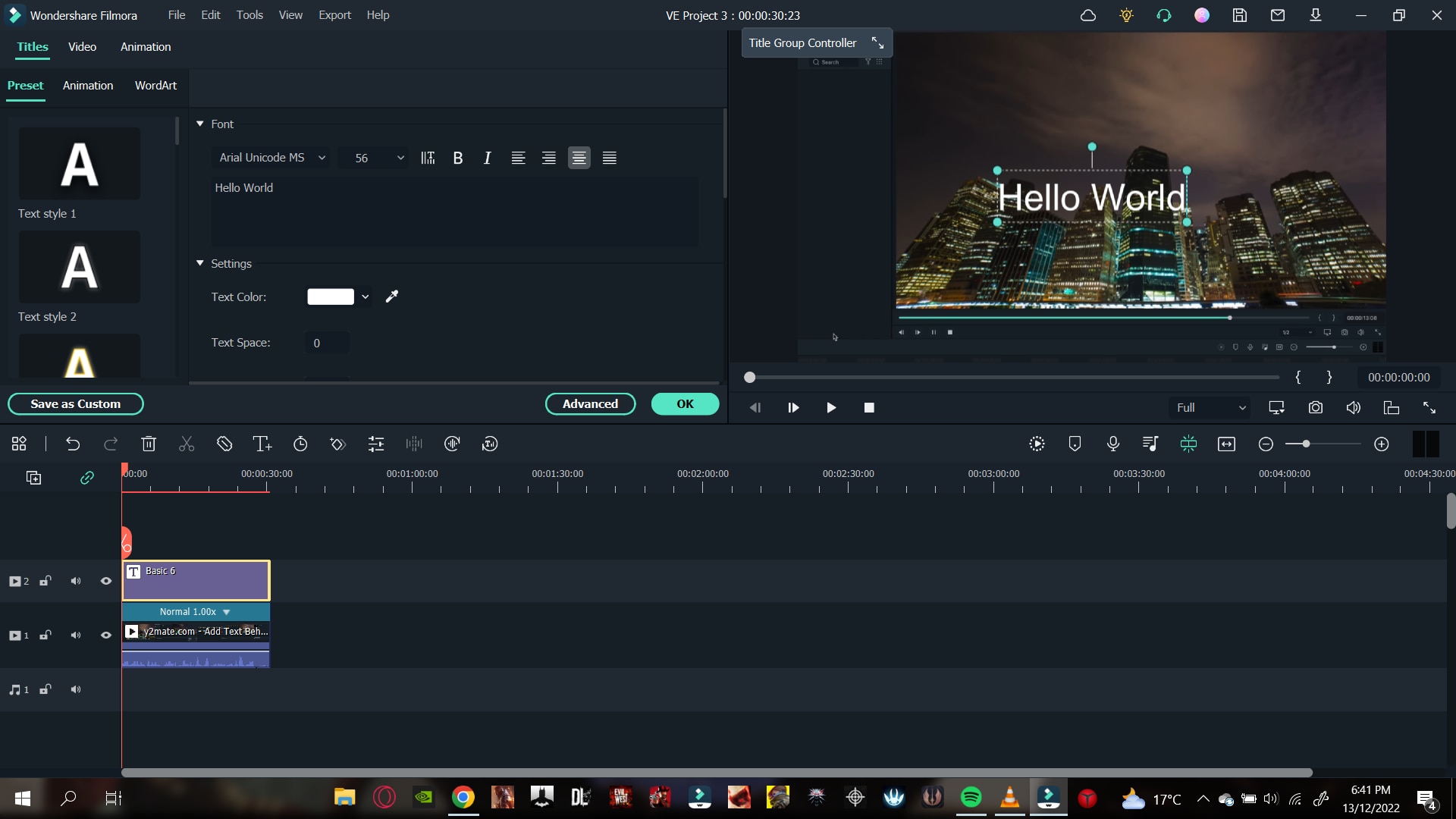
- After the text appears, you can make the font look as desired.
- Look above the text window, and you will see the type of text font selected.
- Click on the drop-down option and choose whatever you like.
Let’s move on to animate the text tile.
Step5 Animate the text tile
After adding text, it is time to animate it. This animation will decide how your text will appear behind the target object.
- First, you must open the text settings by double-clicking on the text tile in the timeline.
- In the settings opened in the import window, you will have to click on the animation tab in the upper left corner, aside from the Preset
- Now scroll down to where you will see the Right Roll
- Click on Right Roll and then click on the OK in the bottom right corner of the import window.
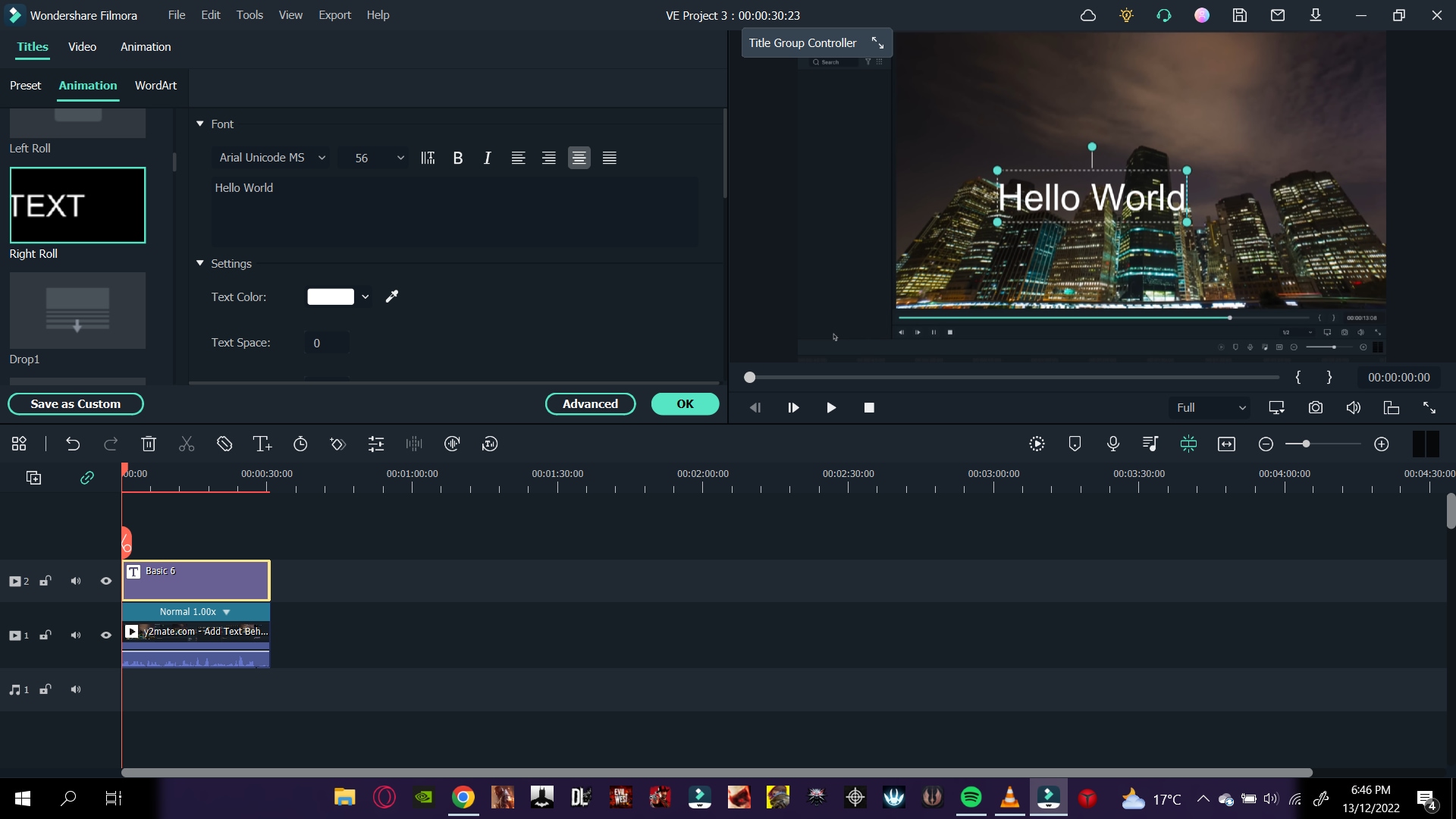
![]()
Note: You may notice now that the text appears in front of our object. Don’t worry now! We are getting there. With a few simple steps, we will see the results.
Now let us move on to the more significant part of the editing, masking the object. Again, look ahead to see how you can mask the object!
Step6 Mask the Object
To mask our object, we will need to be technical. We will begin by adding the same footage of the static object on our timeline. Follow the steps mentioned below:
- Drag and drop the static object footage above the timeline text. Make sure the text stays in the middle of the sandwich.
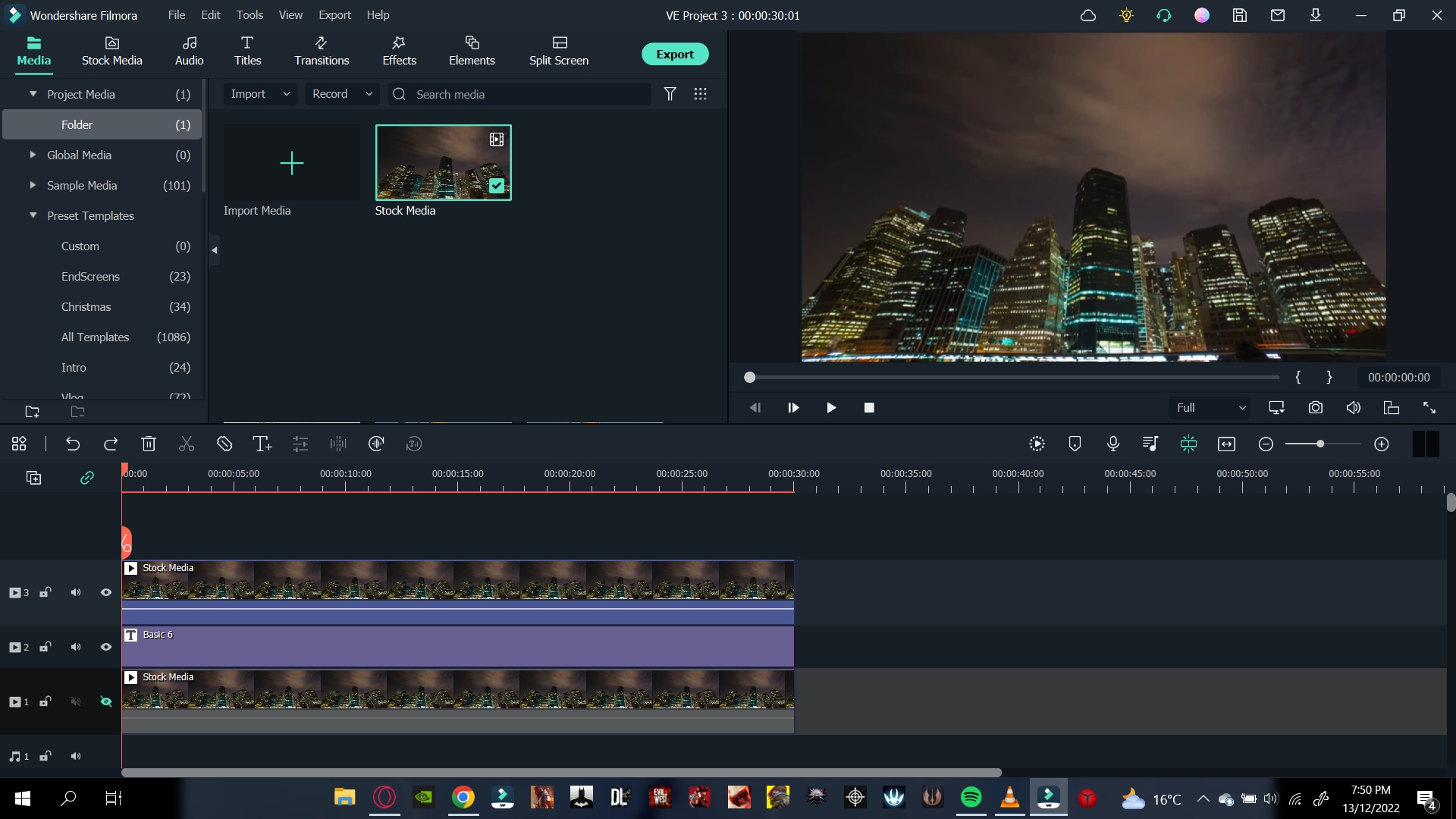
- We will hide the video in the first track to simplify things. In addition, this will make our editing easier.
- We will have to look in the effects library to insert the masking effect.
- You can see the Effects icon on the bar at the top.
- Click on the Effects.
- You will see the search bar at the top of the import window.
- In the search bar, type in Image mask.
- Drag the Image mask effect on the video above the text tile.
Now the masking effect has been added. But we would have to adjust so that it stays upon our object.
- Double-click on the video and the settings option will open up.
- Go into the Effects
![]()
Note: You must select your target object’s mask shape exactly as its shape.
- We have to mask out a building, so that we will need a vertical rectangle.

- After you have selected the shape of your object, we will need to convert it to the object’s size so that it only masks the building.
- To do that, scroll down below the import window to the settings.
- Here you can see the X, Y, and width settings.
- First, move the width bar so that it matches the width of the building.
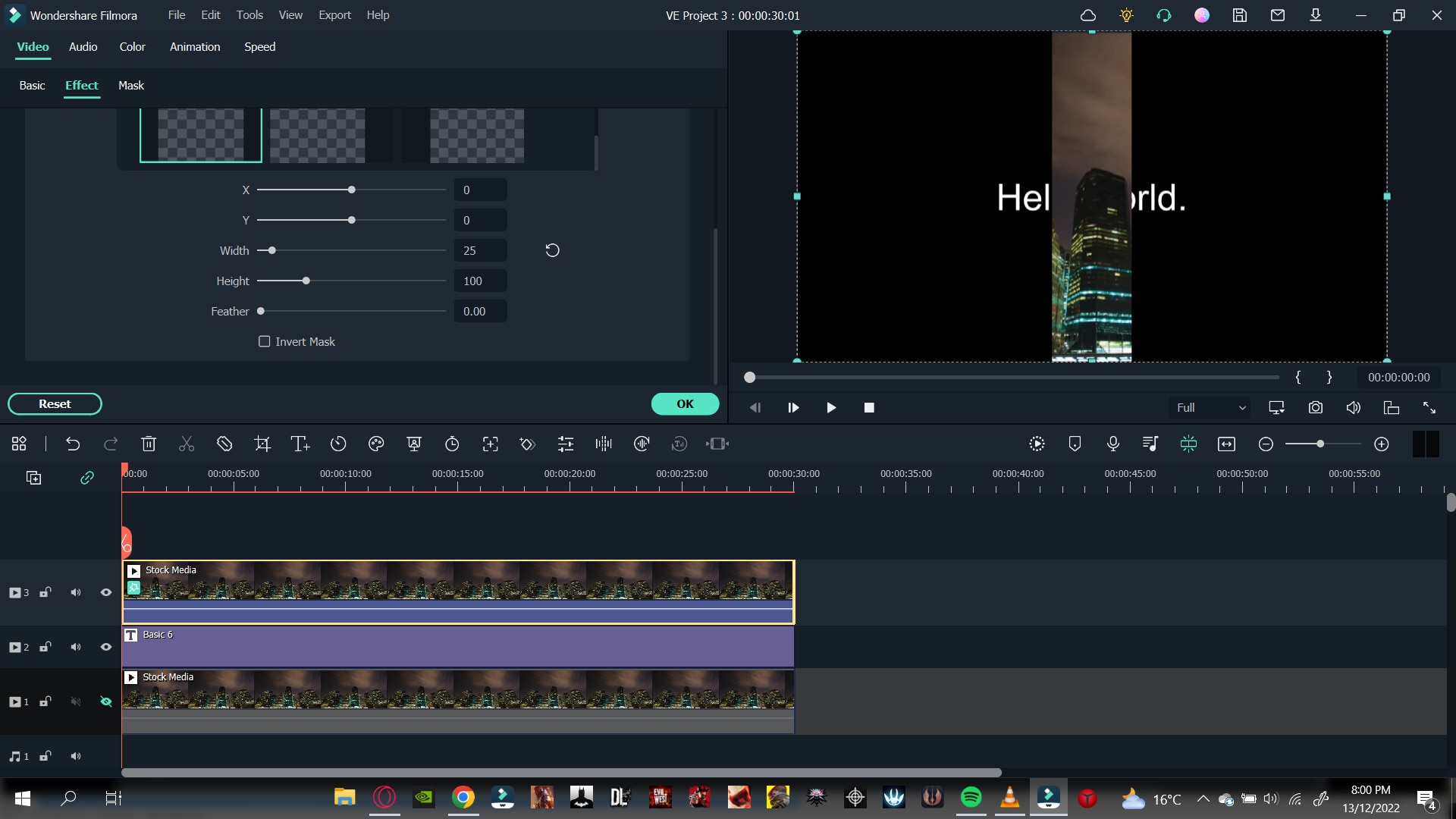
- Now drag the X bar until the mask is confined to the building. You would have created the mask only limited to the building.
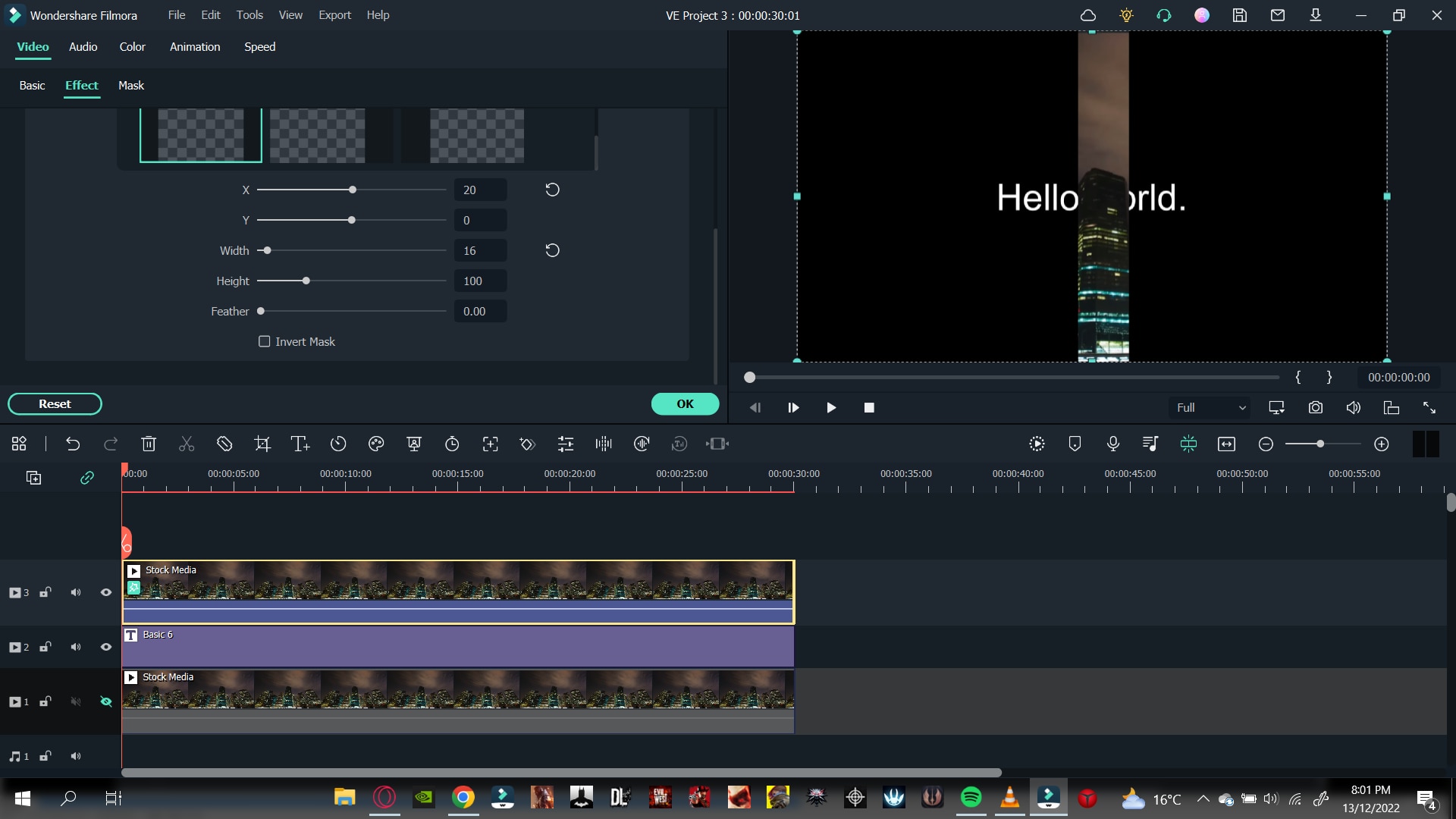
- Once you complete this step, click OK in the bottom right corner.
- Now un-hide the original video that you imported in the beginning.
Finally, play the video in the main play window from the beginning.

You have successfully created a text behind the object effect. Now that you know how to add text behind static objects let us move to learn how to add text to a video that has high contrast and a clean background.
Add text behind a high contrast and clean background
Besides the text can be added behind a static object, it can also be added to a clean background with high contrast. But how is it? Let’s dive into it.
Step1 Import the video into the timeline
- Import the video from the location in your PC media.
- When imported, drag and drop it onto the timeline.

Step2 Add the text tile
To add the text to your video, follow the steps mentioned below.
- Click on the titles icon on the bar above the import window.
- On the left drop-down option, scroll down to the titles.
- Select the Plain text option.
- You will notice that multiple options will pop up in the import window.
- Select the text title that suits you best.
- After you have selected the text style, drag and drop it down above your video in the timeline.
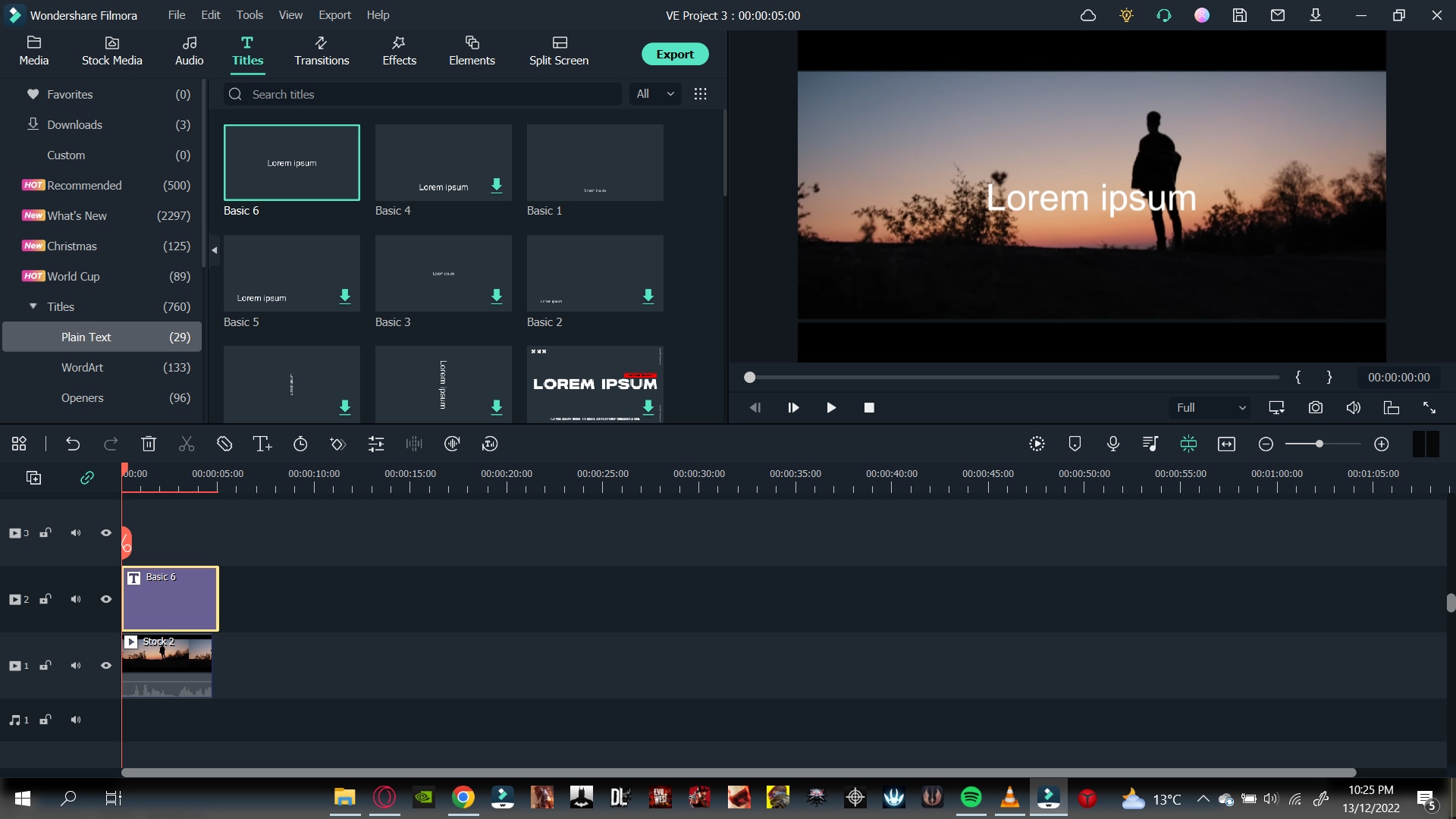
- Our next step would be to add the text.
- Double-click on the text tile. Doing so will open the settings menu in the import window.
- Type in the text that you want. For reference, we will keep it simple such as, “Hello world.”
- You can also adjust the font of your text.
- Above the type box, a drop-down option will show you the range of fonts available.
- Select the font you desire.
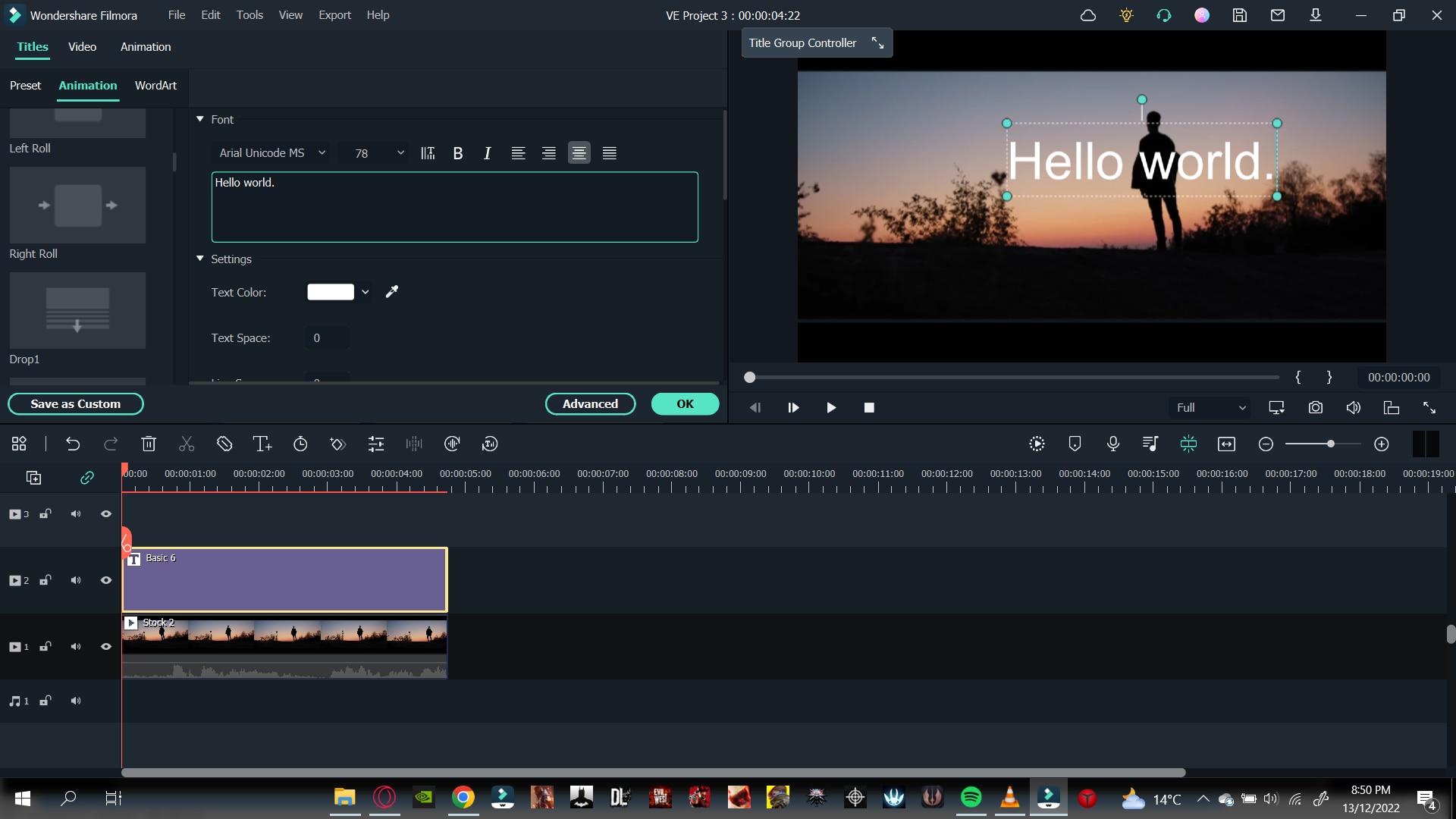
Now that you have added the text, it is time to animate it.
Step3 Take a snapshot
After typing in the text, you will notice in the main play window that your text still appears in front of your object. Therefore, we want to take it behind the object. To do so, first, you will need to take a snapshot.
Follow the steps mentioned to take a snapshot:
- Hide the main video. You can see the Eye icon aside from your main video in the edit column on the left side of the timeline.
- Click on the Eye icon to hide the main video.
- In the main play window, you will notice that the screen turns black, which leaves only the text on the screen.
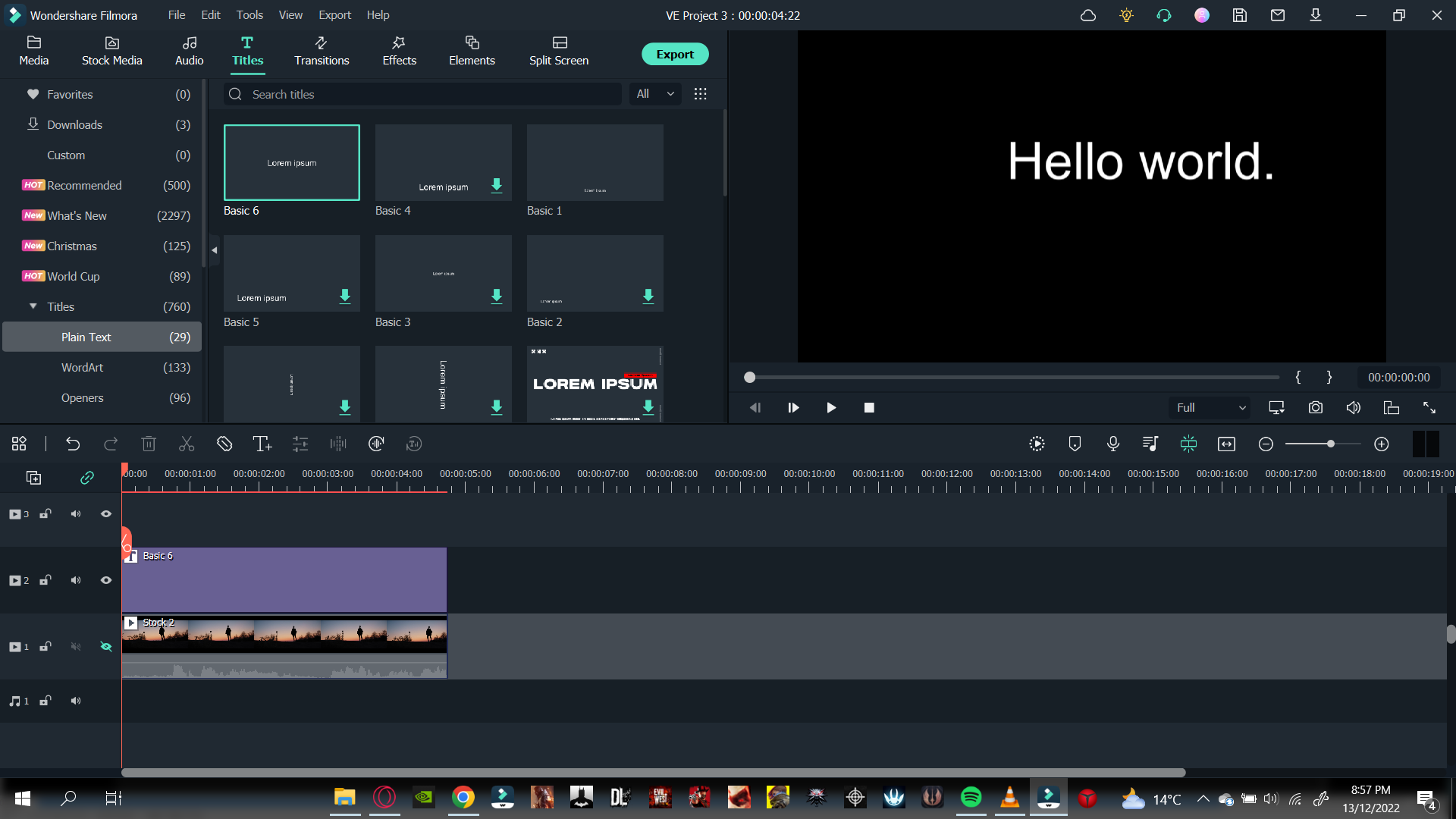
- In the main play screen, you can notice a small camera icon.
- This camera icon is used to take snapshots of your screen.
- Click on the camera icon to take a snapshot of your screen.
- Your snapshot will now be saved in the main import window.
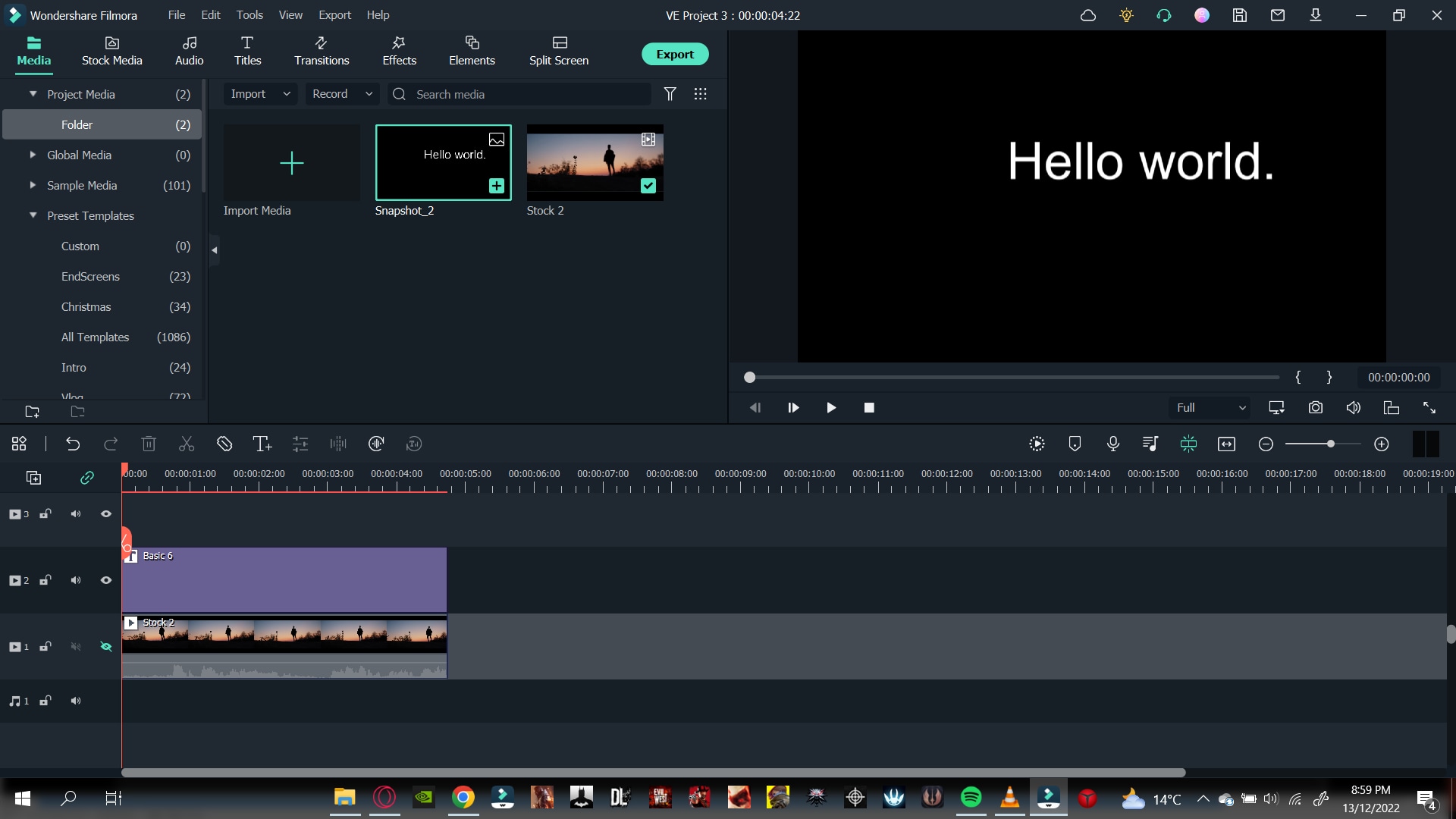
Now that we have taken a snapshot, we will need to import it into the timeline. Scroll below for more.
Step4 Add the snapshot
After taking it, your goal is to import it into the timeline. To perform this action, perform the following steps:
- Before adding the snapshot to the timeline, we must delete the main text tile.
- Then drag and drop the snapshot from the import library into the timeline above the video.
- Make sure that the snapshot is aligned well with the length of the video.
- If it is longer than the video, drag it from the right to match the length of the video.
- If its length is smaller than the video, drag it to the right to increase its length.
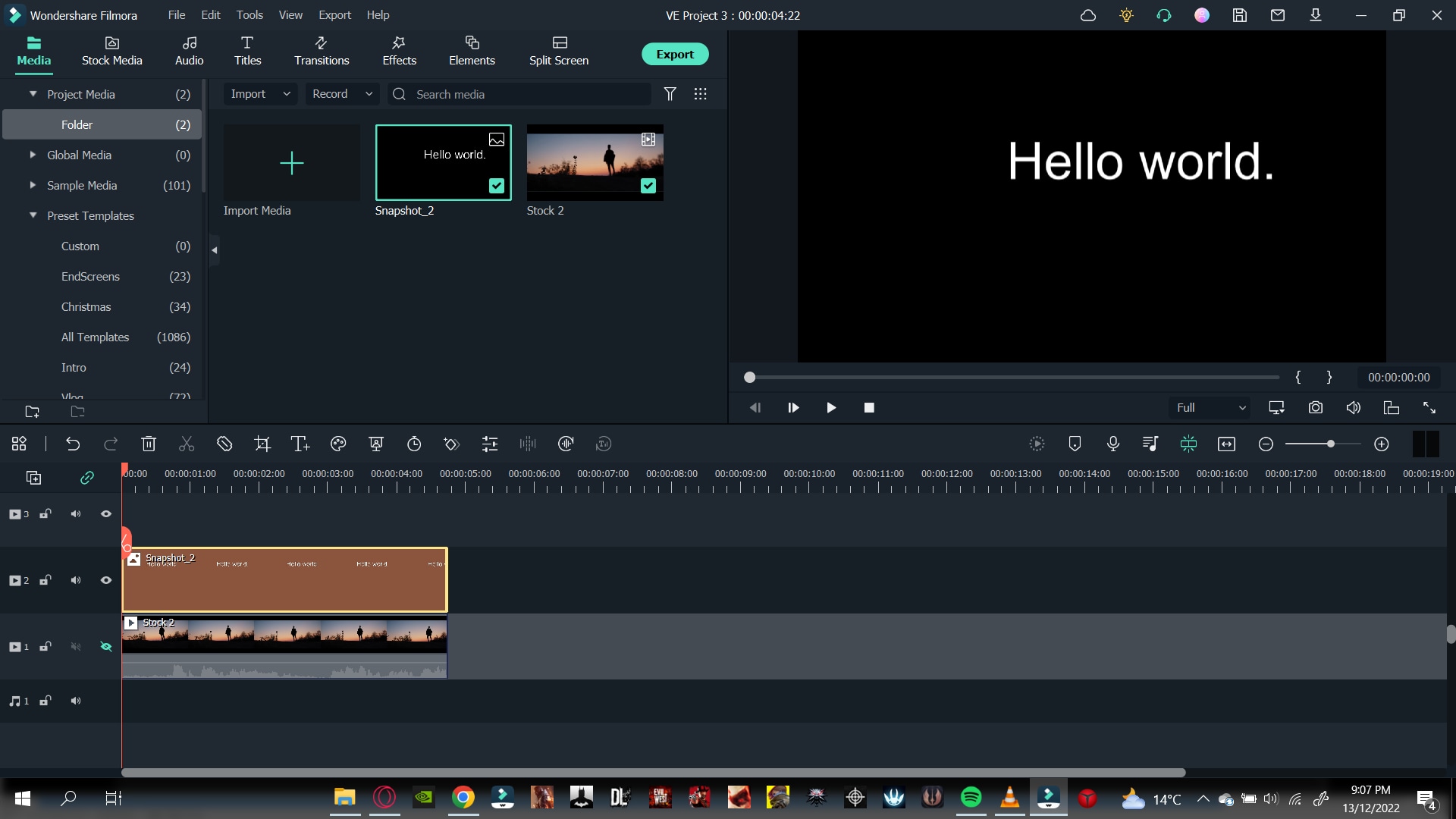
After adding the snapshot, we will have to change its blending mode.
Step5 Change the blending of the snapshot
To create the effect of your text behind the video, you must alter the main text’s blending mode. In this case, it will be the snapshot we took.
![]()
Note: Changing the blending mode of the snapshot will allow it to blend with the transparent background and will create the effect of the text behind the object in the video.
Follow the steps mentioned below to change the blending of the snapshot:
- Double-click the snapshot.
- If you select the compositing tab, the blending options will pop up.
- From default, it would be set to Normal. Click on the Normal
- It will show a drop-down option.
- Scroll down below until you can see an option labeled Then click on Overlay.
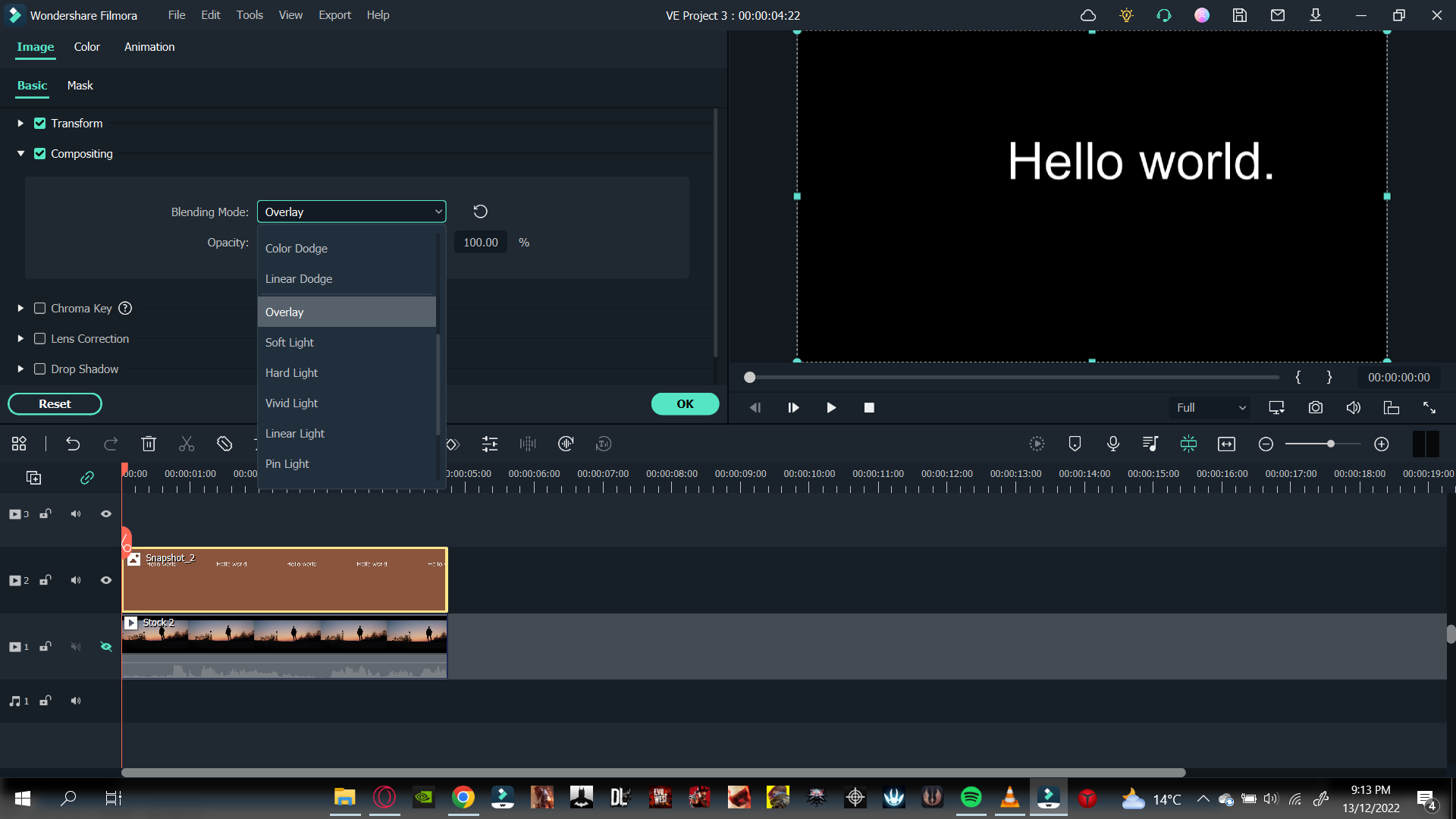
- And press OK in the bottom right corner to confirm your changes.
The text can be blended with the background.
- Click on the Eye icon to un-hide the video from the timeline.
- Now play the video from the start from the main play screen to see the final changes.
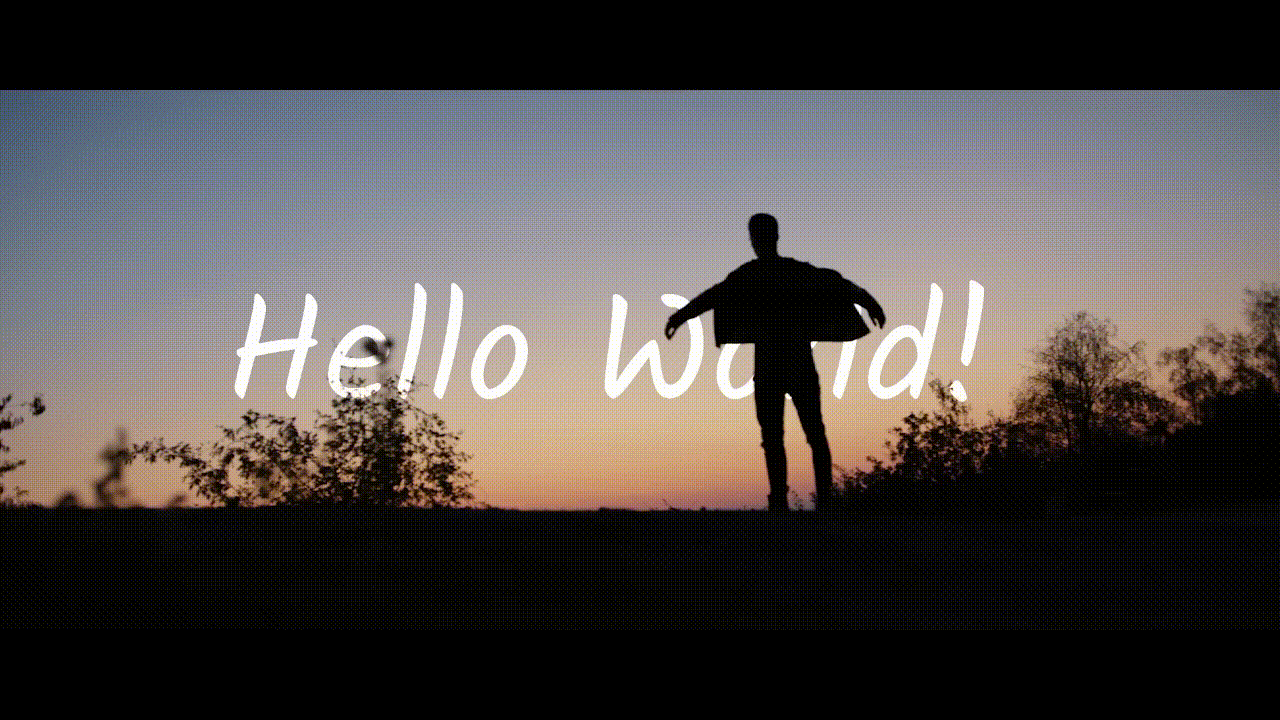
Congratulations! The above steps allow you to add text behind objects in your videos.
Conclusion
Modern media is full of creative content. And if you are a content creator that wants to make it through the world of YouTube and video creating, you need to be the best. You can only be the best at what you do if you keep pushing the boundaries of your creativity.
Adding text behind objects could be the first step in making your intros shine with creativity and innovation. It allows you to maintain and build your viewing audience. The more the audience, the more your content gets watched!
Free Download For macOS 10.14 or later
It has a very engaging system UI, allowing even beginner users to get their hands on it instantly. You will learn how to add text behind your videos with a few simple steps.

Now that you know the requirements for the video, let’s move on to the step-by-step guide to add text to your video.
Part 3. Step-by-Step Guide To Add Text Behind Videos
We look at two examples of how to add text behind videos in Wondershare Filmora.
- A static video with an object that can be easily masked out.
- A video with high contrast and a clean background.
Add Text behind a Static Video
First, we will go with adding text behind a static object. For this, scroll more to get the step-by-step process.
Step1 Download Wondershare Filmora
If you are a beginner just starting in the video editing business, Wondershare Filmora is the best choice. Follow the steps below to download the free version of Wondershare Filmora:
- First, download the Wondershare Filmora on your PC or Mac.
- Open the setup and install the Wondershare Filmora.
After downloading the Wondershare Filmora software, let’s edit the video. Scroll below to learn how to start the editing process!
Step2 Add the Video to the Timeline
We will first look at the static video example. For this, follow the below instructions:
- You have to start by importing your video in the import library.
- From the import library, you can click on the video and drag it down below to the timeline.

![]()
Note: Adding video to the timelines will allow you to create a workspace to edit your video.
Now let’s move on to how we will add the text tile to our video.
Step3 Add the Text Tile
It is time to add the text tile you will animate behind the object. To do that, follow the steps mentioned as such.:
- Go to the Titles icon on the bar above the import library.
- A drop-down option will be available on the left side.
- Scroll down to the Plain text.
- Here, you can see many text tiles to add to your video.
- You can choose anyone you like.
- The most commonly used tile is the Basic 6.
- When you add the text tile to the timeline, you must ensure that the text is of equal length to the video.
- To do that, drag the right corner of the text tile and drag it to the right to match the length of the video.

Step4 Edit the Text Tile
After you have added the text tile you desire, you need to type in the text. For this article, we will keep it simple. We will be typing a simple statement such as “Hello, World.“
- Double-click the Text tile to open the settings menu.
- After the settings menu is opened, type in the text box on the import window.
You will notice changes on the main window that your text has changed.

- After the text appears, you can make the font look as desired.
- Look above the text window, and you will see the type of text font selected.
- Click on the drop-down option and choose whatever you like.
Let’s move on to animate the text tile.
Step5 Animate the text tile
After adding text, it is time to animate it. This animation will decide how your text will appear behind the target object.
- First, you must open the text settings by double-clicking on the text tile in the timeline.
- In the settings opened in the import window, you will have to click on the animation tab in the upper left corner, aside from the Preset
- Now scroll down to where you will see the Right Roll
- Click on Right Roll and then click on the OK in the bottom right corner of the import window.

![]()
Note: You may notice now that the text appears in front of our object. Don’t worry now! We are getting there. With a few simple steps, we will see the results.
Now let us move on to the more significant part of the editing, masking the object. Again, look ahead to see how you can mask the object!
Step6 Mask the Object
To mask our object, we will need to be technical. We will begin by adding the same footage of the static object on our timeline. Follow the steps mentioned below:
- Drag and drop the static object footage above the timeline text. Make sure the text stays in the middle of the sandwich.

- We will hide the video in the first track to simplify things. In addition, this will make our editing easier.
- We will have to look in the effects library to insert the masking effect.
- You can see the Effects icon on the bar at the top.
- Click on the Effects.
- You will see the search bar at the top of the import window.
- In the search bar, type in Image mask.
- Drag the Image mask effect on the video above the text tile.
Now the masking effect has been added. But we would have to adjust so that it stays upon our object.
- Double-click on the video and the settings option will open up.
- Go into the Effects
![]()
Note: You must select your target object’s mask shape exactly as its shape.
- We have to mask out a building, so that we will need a vertical rectangle.

- After you have selected the shape of your object, we will need to convert it to the object’s size so that it only masks the building.
- To do that, scroll down below the import window to the settings.
- Here you can see the X, Y, and width settings.
- First, move the width bar so that it matches the width of the building.

- Now drag the X bar until the mask is confined to the building. You would have created the mask only limited to the building.

- Once you complete this step, click OK in the bottom right corner.
- Now un-hide the original video that you imported in the beginning.
Finally, play the video in the main play window from the beginning.

You have successfully created a text behind the object effect. Now that you know how to add text behind static objects let us move to learn how to add text to a video that has high contrast and a clean background.
Add text behind a high contrast and clean background
Besides the text can be added behind a static object, it can also be added to a clean background with high contrast. But how is it? Let’s dive into it.
Step1 Import the video into the timeline
- Import the video from the location in your PC media.
- When imported, drag and drop it onto the timeline.

Step2 Add the text tile
To add the text to your video, follow the steps mentioned below.
- Click on the titles icon on the bar above the import window.
- On the left drop-down option, scroll down to the titles.
- Select the Plain text option.
- You will notice that multiple options will pop up in the import window.
- Select the text title that suits you best.
- After you have selected the text style, drag and drop it down above your video in the timeline.

- Our next step would be to add the text.
- Double-click on the text tile. Doing so will open the settings menu in the import window.
- Type in the text that you want. For reference, we will keep it simple such as, “Hello world.”
- You can also adjust the font of your text.
- Above the type box, a drop-down option will show you the range of fonts available.
- Select the font you desire.

Now that you have added the text, it is time to animate it.
Step3 Take a snapshot
After typing in the text, you will notice in the main play window that your text still appears in front of your object. Therefore, we want to take it behind the object. To do so, first, you will need to take a snapshot.
Follow the steps mentioned to take a snapshot:
- Hide the main video. You can see the Eye icon aside from your main video in the edit column on the left side of the timeline.
- Click on the Eye icon to hide the main video.
- In the main play window, you will notice that the screen turns black, which leaves only the text on the screen.

- In the main play screen, you can notice a small camera icon.
- This camera icon is used to take snapshots of your screen.
- Click on the camera icon to take a snapshot of your screen.
- Your snapshot will now be saved in the main import window.

Now that we have taken a snapshot, we will need to import it into the timeline. Scroll below for more.
Step4 Add the snapshot
After taking it, your goal is to import it into the timeline. To perform this action, perform the following steps:
- Before adding the snapshot to the timeline, we must delete the main text tile.
- Then drag and drop the snapshot from the import library into the timeline above the video.
- Make sure that the snapshot is aligned well with the length of the video.
- If it is longer than the video, drag it from the right to match the length of the video.
- If its length is smaller than the video, drag it to the right to increase its length.

After adding the snapshot, we will have to change its blending mode.
Step5 Change the blending of the snapshot
To create the effect of your text behind the video, you must alter the main text’s blending mode. In this case, it will be the snapshot we took.
![]()
Note: Changing the blending mode of the snapshot will allow it to blend with the transparent background and will create the effect of the text behind the object in the video.
Follow the steps mentioned below to change the blending of the snapshot:
- Double-click the snapshot.
- If you select the compositing tab, the blending options will pop up.
- From default, it would be set to Normal. Click on the Normal
- It will show a drop-down option.
- Scroll down below until you can see an option labeled Then click on Overlay.

- And press OK in the bottom right corner to confirm your changes.
The text can be blended with the background.
- Click on the Eye icon to un-hide the video from the timeline.
- Now play the video from the start from the main play screen to see the final changes.

Congratulations! The above steps allow you to add text behind objects in your videos.
Conclusion
Modern media is full of creative content. And if you are a content creator that wants to make it through the world of YouTube and video creating, you need to be the best. You can only be the best at what you do if you keep pushing the boundaries of your creativity.
Adding text behind objects could be the first step in making your intros shine with creativity and innovation. It allows you to maintain and build your viewing audience. The more the audience, the more your content gets watched!
Everything That You Need to Know About Video Montages- Ideas, Techniqu
Video montages are one of the best types of video formats people enjoy, and they are useful for different occasions. Whether you want to create a montage of your memories as an anniversary gift or create a montage of product photos for promotions, uses are multiple here. This prompts the need for users to learn how to make a montage, and that is what we will cover in this post.
These videos, with a series of shots and information edited together cohesively in sequence, are useful for showcasing storyline progress. Here, you will learn about use cases of the process, like a birthday video montage, more ideas, and the process of making them. Read on if any of that interests you.

Part 1. Classic Montage Ideas in Art and Film
Video montages play a major role in films, art productions, and gaming, like the call of duty montage.
In terms of the first example, when you watch movies, you might notice this technique used in many movies, utilized more prominently since the 1920s when Sergei Eisenstein coined the term first. These scenes appear as stitched-together shots of the characters showing time passage, enjoying activities or memories.
Different techniques are common, like rhythmic, metric, intellectual, or tonal. For example, the 2000 movie “Requiem for a Dream” showcased an intellectual/metric style of video montage to show the disorientating effect of the character under drug influence. A relatively recent example would be Benedict Cumberbatch’s 2016 movie “Doctor Strange”, where the montage shows the titular character’s interaction with the villain (no spoilers).
3 Top Montages in Film for All Times
If the above two examples did not fully express what is a montage video, seeing more examples should help. For this, here are three of the top montage examples available in Film History, each version representing a separate video montage style.
1. Rocky (1976)
One of the most notable montages is available in the 1976 action movie, the Sylvester Stallone-starrer “Rocky”. The type of video montage that is visible in this movie is rhythmic in nature, showcasing the training the character undergoes. This is edited with a musical background score, summarising some shots’ full training progression process.
To add an emotive tone to the video, music is added to the video clip that engages audiences to feel the character’s passion. A rhythmic style of video montage technique is used to cut the shorts as per the content. The lengths of each clip are not similar and differ as per the action going on in the scene.
2. Mulan (1998)
Video montages are also visible in animated movies, as seen in the 1998 version of Disney’s “Mulan”. The scene in question is where the song “I’ll Make a Man Out of You” plays while Mulan undergoes strict training for the military from the male lead. A sequence of shots showing her progress is shown.
Here, the video montage is shown with the background music that perfectly aligns with what is occurring in the video. The visuals and the audio in the background cohesively show the main character’s struggle, which creates an emotional response in the audience. Therefore, the style of video montage here falls under tonal or overtonal categories.
Watch this video to get an idea of how music and visuals can partner for tonal video montages.
3. Creed (2015)
Like in the Rocky movie, its 2015 sequel, “Creed”, also has a video montage. Here, the clips in the sequence are also used to depict the intense training progress. However, where it differs from the rhythmic formula is that the sequence highlights the emotional journey or determination of Adonis Creed to succeed.
Plus, this video montage is a homage to the original version; the tonal effect is further noticeable in the scene of Rocky’s health deterioration against Creed’s training. Thus, it juxtaposes the two scenes, creating an emotional impact on viewers to root for the main character.
Watch this video to understand what is a montage video of the tonal type.
Part 2. Creative Montage Ideas for Social Media
Of course, movies and TV shows are the only types of media where video montage techniques are useful. Many non-professionals use options like a fortnite montage editor to create and edit montage videos for other projects they can share across platforms. Some even create video montages to create videos for social media.
These include vlog-like videos that people record and then edit together into a montage which different techniques. Plus, some users create montages of different things that interest them, like gameplay. Then, they share those videos across social media for views, like on TikTok or YouTube.
· Gaming Montages
Different creators focus on developing gaming montages to create projects for the games they operate. These can include videos showcasing the skills or gameplays of the creation, all explaining a specific theme in some cases.
There are different games that the users focus on for showcasing their gaming prowess in action. Common examples include Fortnite, Call of Duty, CSGO, or PUBG montage videos.
Watch this video to get an idea.
· Wedding Montages
Many users turn to edit video montages for specific occasions, adding clips of different moments instead of one long-running documentary. They incorporate stylish effects like slow motion and transitions, incorporate a moving background score, and more.
Many top influencers and celebrities have used this technique for their wedding videos on social media. Additionally, regular people also adopt the style.
Watch this video as an example.
· Birthday Montages
Like wedding videos, users can try out the video montage technique to create videos for birthdays. These can include scenes of the main creator throughout their preparation phase for the party. Alternately, some users create video montages of their experience leading up to the video celebration, through a longer period or the same day.
Watch this video to understand how these videos may look.
Part 3. How Can I Create Easily a Montage Video?
After understanding the types of video montage techniques and ideas, the next point of concern is learning how to make a montage.
One of the best editing software to use for this process is Wondershare Filmora . With this editor, you can create different video montages as per the theme, customized or instantly. Filmora includes premium-quality effects and transitions, including free stock media that you can also add. Plus, the software allows the ability to record voiceover and adjust background scores in the video.
You can also choose the aspect ratio for the video, depending on the platform you post it on. For example, if you are creating a full professional-level scene montage, use the widescreen (16:9) aspect ratio, like in YouTube videos. Or, use the portrait (9:16) for mobile-based videos for TikTok videos or a 1:1 aspect ratio for Instagram videos.
Watch this video to know how it works.
Free Download For Win 7 or later(64-bit)
Free Download For macOS 10.14 or later
Features of Filmora for Video Montage Making
There are multiple top-quality features available in the Filmora software that is useful for creating and editing video montages. Use them and create dynamic videos.
1. Screen Recorder
The Screen Recorder feature is accessible through the home page of the Filmora software after launching. Since the first stage of making a montage involves getting the video clips for it, you can use this to record the video. For example, if you have a movie saved on your desktop, use the screen recorder and tap the Play button to record the screen.

You can adjust further settings, like which headphone or speaker to use for the audio recording.
2. Preset Templates
Next comes the editing process. After completing the recording process for the montage video, you can use preset templates on Filmora via Instant Mode. This is useful for users who do not have enough time to fully edit a long montage video or have the technical skills for it.
You can click on the Instant Mode tab on the home page. Then, choose the specific theme of the video montage you will create, like Birthday, Wedding, Business, etc. After selecting the theme, you can insert multiple video clips into the editor. Adjust the clips in sequence and press the “Auto-Create” button.

3. Abundant Video Effects and Music Resources
If you want to customize the video montage video manually, you can use the various effects and advanced features in the main editor timeline. For example, click on the Effects tab to find your options.

After importing the file(s) into the editor and dragging it to the timeline, you can use the Crop icon to cut clips. Then, rearrange them and merge them. Plus, further editing features are available for premium-level edits, like the Chroma Key. Click on it and add a green screen in the background.

The AI Portrait feature is also available, automatically detecting the main character and accurately removing the background.
You can adjust the speed of transitions in the video with the Speed Ramping function. Many high-quality effects are available under the Effects tab, and you can add audio to the video through the Media tab.

Conclusion
Video montages are one of the tried-and-tested methods used in film-making, gaming videos, and social media videos. You can use Filmora to create such video montages based on the type of video montage technique that fits it. Then, share it directly to YouTube or save it for transferring across different platforms.
Free Download For Win 7 or later(64-bit)
Free Download For macOS 10.14 or later
Part 1. Classic Montage Ideas in Art and Film
Video montages play a major role in films, art productions, and gaming, like the call of duty montage.
In terms of the first example, when you watch movies, you might notice this technique used in many movies, utilized more prominently since the 1920s when Sergei Eisenstein coined the term first. These scenes appear as stitched-together shots of the characters showing time passage, enjoying activities or memories.
Different techniques are common, like rhythmic, metric, intellectual, or tonal. For example, the 2000 movie “Requiem for a Dream” showcased an intellectual/metric style of video montage to show the disorientating effect of the character under drug influence. A relatively recent example would be Benedict Cumberbatch’s 2016 movie “Doctor Strange”, where the montage shows the titular character’s interaction with the villain (no spoilers).
3 Top Montages in Film for All Times
If the above two examples did not fully express what is a montage video, seeing more examples should help. For this, here are three of the top montage examples available in Film History, each version representing a separate video montage style.
1. Rocky (1976)
One of the most notable montages is available in the 1976 action movie, the Sylvester Stallone-starrer “Rocky”. The type of video montage that is visible in this movie is rhythmic in nature, showcasing the training the character undergoes. This is edited with a musical background score, summarising some shots’ full training progression process.
To add an emotive tone to the video, music is added to the video clip that engages audiences to feel the character’s passion. A rhythmic style of video montage technique is used to cut the shorts as per the content. The lengths of each clip are not similar and differ as per the action going on in the scene.
2. Mulan (1998)
Video montages are also visible in animated movies, as seen in the 1998 version of Disney’s “Mulan”. The scene in question is where the song “I’ll Make a Man Out of You” plays while Mulan undergoes strict training for the military from the male lead. A sequence of shots showing her progress is shown.
Here, the video montage is shown with the background music that perfectly aligns with what is occurring in the video. The visuals and the audio in the background cohesively show the main character’s struggle, which creates an emotional response in the audience. Therefore, the style of video montage here falls under tonal or overtonal categories.
Watch this video to get an idea of how music and visuals can partner for tonal video montages.
3. Creed (2015)
Like in the Rocky movie, its 2015 sequel, “Creed”, also has a video montage. Here, the clips in the sequence are also used to depict the intense training progress. However, where it differs from the rhythmic formula is that the sequence highlights the emotional journey or determination of Adonis Creed to succeed.
Plus, this video montage is a homage to the original version; the tonal effect is further noticeable in the scene of Rocky’s health deterioration against Creed’s training. Thus, it juxtaposes the two scenes, creating an emotional impact on viewers to root for the main character.
Watch this video to understand what is a montage video of the tonal type.
Part 2. Creative Montage Ideas for Social Media
Of course, movies and TV shows are the only types of media where video montage techniques are useful. Many non-professionals use options like a fortnite montage editor to create and edit montage videos for other projects they can share across platforms. Some even create video montages to create videos for social media.
These include vlog-like videos that people record and then edit together into a montage which different techniques. Plus, some users create montages of different things that interest them, like gameplay. Then, they share those videos across social media for views, like on TikTok or YouTube.
· Gaming Montages
Different creators focus on developing gaming montages to create projects for the games they operate. These can include videos showcasing the skills or gameplays of the creation, all explaining a specific theme in some cases.
There are different games that the users focus on for showcasing their gaming prowess in action. Common examples include Fortnite, Call of Duty, CSGO, or PUBG montage videos.
Watch this video to get an idea.
· Wedding Montages
Many users turn to edit video montages for specific occasions, adding clips of different moments instead of one long-running documentary. They incorporate stylish effects like slow motion and transitions, incorporate a moving background score, and more.
Many top influencers and celebrities have used this technique for their wedding videos on social media. Additionally, regular people also adopt the style.
Watch this video as an example.
· Birthday Montages
Like wedding videos, users can try out the video montage technique to create videos for birthdays. These can include scenes of the main creator throughout their preparation phase for the party. Alternately, some users create video montages of their experience leading up to the video celebration, through a longer period or the same day.
Watch this video to understand how these videos may look.
Part 3. How Can I Create Easily a Montage Video?
After understanding the types of video montage techniques and ideas, the next point of concern is learning how to make a montage.
One of the best editing software to use for this process is Wondershare Filmora . With this editor, you can create different video montages as per the theme, customized or instantly. Filmora includes premium-quality effects and transitions, including free stock media that you can also add. Plus, the software allows the ability to record voiceover and adjust background scores in the video.
You can also choose the aspect ratio for the video, depending on the platform you post it on. For example, if you are creating a full professional-level scene montage, use the widescreen (16:9) aspect ratio, like in YouTube videos. Or, use the portrait (9:16) for mobile-based videos for TikTok videos or a 1:1 aspect ratio for Instagram videos.
Watch this video to know how it works.
Free Download For Win 7 or later(64-bit)
Free Download For macOS 10.14 or later
Features of Filmora for Video Montage Making
There are multiple top-quality features available in the Filmora software that is useful for creating and editing video montages. Use them and create dynamic videos.
1. Screen Recorder
The Screen Recorder feature is accessible through the home page of the Filmora software after launching. Since the first stage of making a montage involves getting the video clips for it, you can use this to record the video. For example, if you have a movie saved on your desktop, use the screen recorder and tap the Play button to record the screen.

You can adjust further settings, like which headphone or speaker to use for the audio recording.
2. Preset Templates
Next comes the editing process. After completing the recording process for the montage video, you can use preset templates on Filmora via Instant Mode. This is useful for users who do not have enough time to fully edit a long montage video or have the technical skills for it.
You can click on the Instant Mode tab on the home page. Then, choose the specific theme of the video montage you will create, like Birthday, Wedding, Business, etc. After selecting the theme, you can insert multiple video clips into the editor. Adjust the clips in sequence and press the “Auto-Create” button.

3. Abundant Video Effects and Music Resources
If you want to customize the video montage video manually, you can use the various effects and advanced features in the main editor timeline. For example, click on the Effects tab to find your options.

After importing the file(s) into the editor and dragging it to the timeline, you can use the Crop icon to cut clips. Then, rearrange them and merge them. Plus, further editing features are available for premium-level edits, like the Chroma Key. Click on it and add a green screen in the background.

The AI Portrait feature is also available, automatically detecting the main character and accurately removing the background.
You can adjust the speed of transitions in the video with the Speed Ramping function. Many high-quality effects are available under the Effects tab, and you can add audio to the video through the Media tab.

Conclusion
Video montages are one of the tried-and-tested methods used in film-making, gaming videos, and social media videos. You can use Filmora to create such video montages based on the type of video montage technique that fits it. Then, share it directly to YouTube or save it for transferring across different platforms.
Free Download For Win 7 or later(64-bit)
Free Download For macOS 10.14 or later
Also read:
- New LumaFusion – What Is It and the Best Alternative to Use for 2024
- 2024 Approved Learn How to Rotate Videos with Ease Using Shotcut with Our Comprehensive Guide. Discover Tips and Tricks to Get the Perfect Footage Every Time. Start Using Shotcut Today
- 2024 Approved 10+ Best Unlimited FCPX Slideshow Templates
- A Review of 3D LUT Mobile App - A Composite Application for Editing Media for 2024
- New As an Online Marketer, It Is Important to Know the Algorithm of YouTube Platform. Ill Share You the History of Algorithm of YouTube and the New Changes in This Year
- New 12 Impressive AI Video Ideas for Creating Engaging Video Content for 2024
- Do You Want to Make Your Photos and Videos Look Different From Others? There Are Many Lightroom LUTs Free, and They Make Your Media Content Stand Out From Others
- New Intro Videos Have the Potential to Make a First Impression on Viewers, and You Know How They Say that the First Impression Is the Last Impression
- Techniques You Never Heard of for Learning AI Marketing YouTube
- New 2024 Approved How To Make A Video Longer
- What Is AI Composite Video App and AI Composite Video Guide for 2024
- Updated 2024 Approved 10 Best Movie Trailer Voice Generators Windows, Mac, Android, iPhone & Online
- New In 2024, How to Color-Correct an S-Log Footage
- New Looking for the Simple Steps to Add Transition Effects in Your Video? We Will Illustrate How to Add Transition in Filmora and Mention Tips and Tricks for Video Transition Effects
- Making Creative and Engaging Youtube Videos Is Now Easy with Several Tools. Now, YouTube Also Offers You Its Own Built-In Video Editor Through Which You Can Edit and Enhance the Video Quality for 2024
- Updated In 2024, Level Up Videos By Applying Keyframe Like A Pro
- Updated Best 8 Educational Video Websites for Teachers for 2024
- New Are You Thinking of Learning Video Editing in the Final Cut Pro Software? In This Article, You Will Learn Different Ways of Splitting and Merging Multiple Videos at Once as a New Skill to Get Your Business to a New Level
- New In 2024, Quick Answer What Is a GIF File
- Updated 2024 Approved Top-Rated Android Apps For Slowing Down Motion
- 2024 Approved Detailed Steps to Rotate Videos in Davinci Resolve
- How to Make GIFs From Videos on Mac
- New In 2024, Best 15 Subtitle Apps 2023 Windows, Mac, iPhone, Android & Online
- Synchronizing Videos Can Be Hectic, but Do You Wish to Know a Good Tool for This Purpose? This Article Will Discuss Wondershare Filmora, Which Is Perfect for This for 2024
- New To Know How to Add Effects in Premiere Pro, You Need to Follow This Guide as It Has All You Need to Know to Add Effects in Premiere Pro. Learn More Here
- 2024 Approved How To Trim Video In Premiere Pro in Different Ways
- New Learn How to Make Your CSGO Montage Impressive
- Updated Finding Best GIF Websites Is Easy as Pie
- New In 2024, How to Create a Glitch Text Effect?
- Updated In 2024, Make A Countdown Video
- New 2024 Approved Guide to Create an Intro Video with Filmora
- New In 2024, How to Crop a Video in Davinci Resolve Step by Step
- Updated 2024 Approved 10 Best Music Video Templates to Make Your Video Popular
- Do You Want to Record Videos with a Phantom High-Speed Camera? In This Guide, You Can Get a Detailed Note on the Phantom Camera for 2024
- In 2024, Create Risograph Effect In Photoshop A Beginners Guide
- 2024 Approved Discover How to Change Sky Background with The Best Applications? A Review
- Updated In 2024, Best Online GIF to Image (PNG/JPG) Converter
- Updated How To Mirror a Video Clip in Premiere Pro for 2024
- How to Get Motion Blur in Roblox, In 2024
- 4 Ways to Transfer Music from Realme C53 to iPhone | Dr.fone
- 5 Ways to Transfer Music from Apple iPhone 6s Plus to Android | Dr.fone
- Can Life360 Track You When Your Honor X8b is off? | Dr.fone
- Preparation to Beat Giovani in Pokemon Go For Vivo V29 | Dr.fone
- How To Activate and Use Life360 Ghost Mode On Motorola Defy 2 | Dr.fone
- How to Fix It ZTE Axon 40 Lite Wont Turn On | Dr.fone
- Motorola Data Retrieval tool – restore lost data from Motorola Edge 40
- Pokémon Go Cooldown Chart On Vivo Y100A | Dr.fone
- How to Screen Mirror on Apple iPhone 8? | Dr.fone
- Cellular Network Not Available for Voice Calls On Huawei Nova Y71 | Dr.fone
- In 2024, Easy Guide to Itel P40 FRP Bypass With Best Methods
- Fake the Location to Get Around the MLB Blackouts on OnePlus 12 | Dr.fone
- iPogo will be the new iSpoofer On Vivo V27 Pro? | Dr.fone
- How To Recover Lost Data of iPhone XS? | Dr.fone
- In 2024, Forgot Apple iPhone 14 Pro Backup Password? Heres What to Do | Dr.fone
- Android Screen Stuck General ZTE Axon 40 Lite Partly Screen Unresponsive | Dr.fone
- In 2024, Effortless Ways to Transfer Data from Your Apple iPhone XS Max to iPhone 15 | Dr.fone
- How to Flash Dead Tecno Spark 20 Pro+ Safely | Dr.fone
- 4 Most-Known Ways to Find Someone on Tinder For Apple iPhone 11 Pro by Name | Dr.fone
- Title: Easy Guide to Use a Stabilization Tool in Filmora
- Author: Chloe
- Created at : 2024-05-20 03:37:26
- Updated at : 2024-05-21 03:37:26
- Link: https://ai-editing-video.techidaily.com/easy-guide-to-use-a-stabilization-tool-in-filmora/
- License: This work is licensed under CC BY-NC-SA 4.0.

